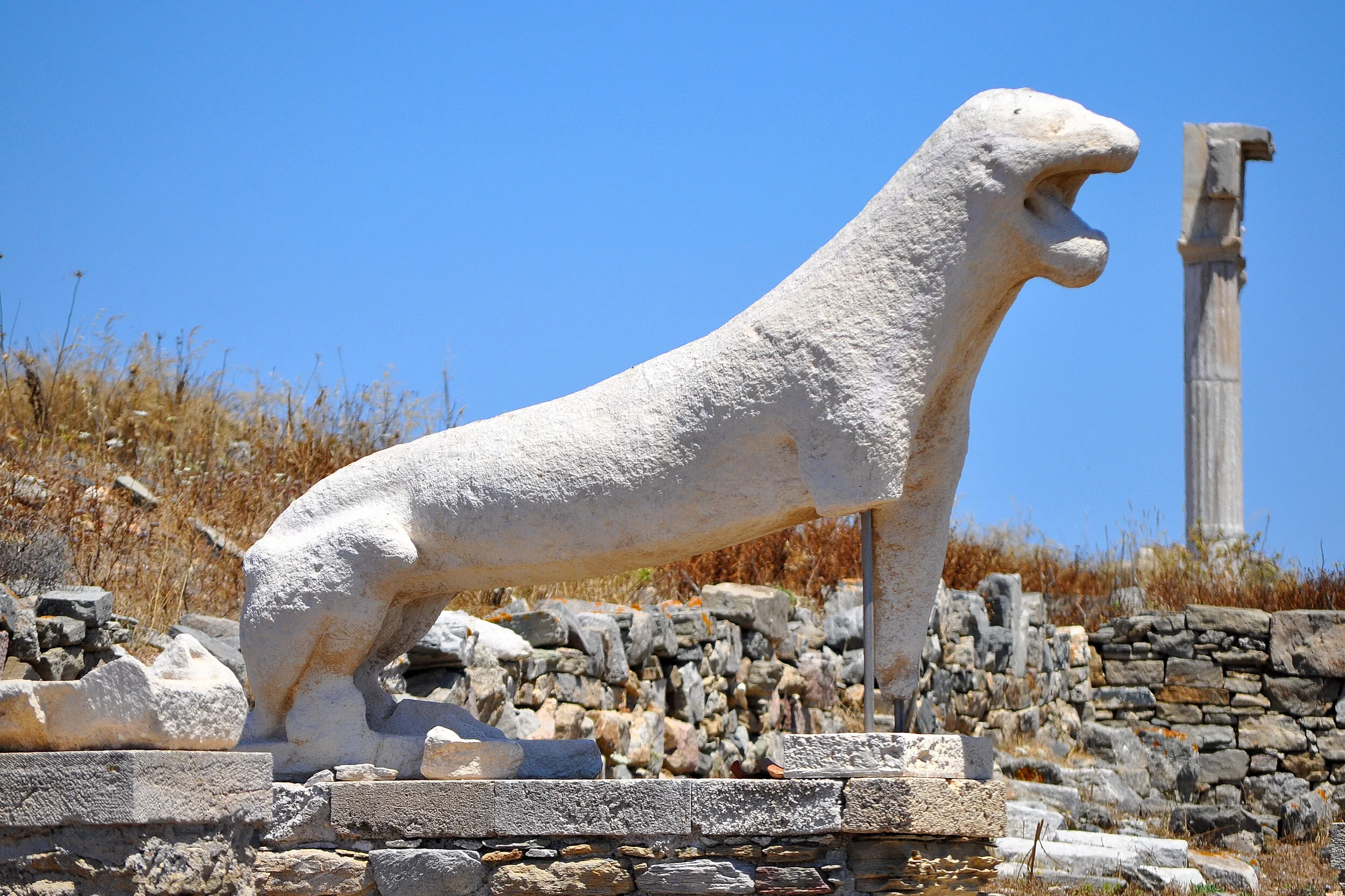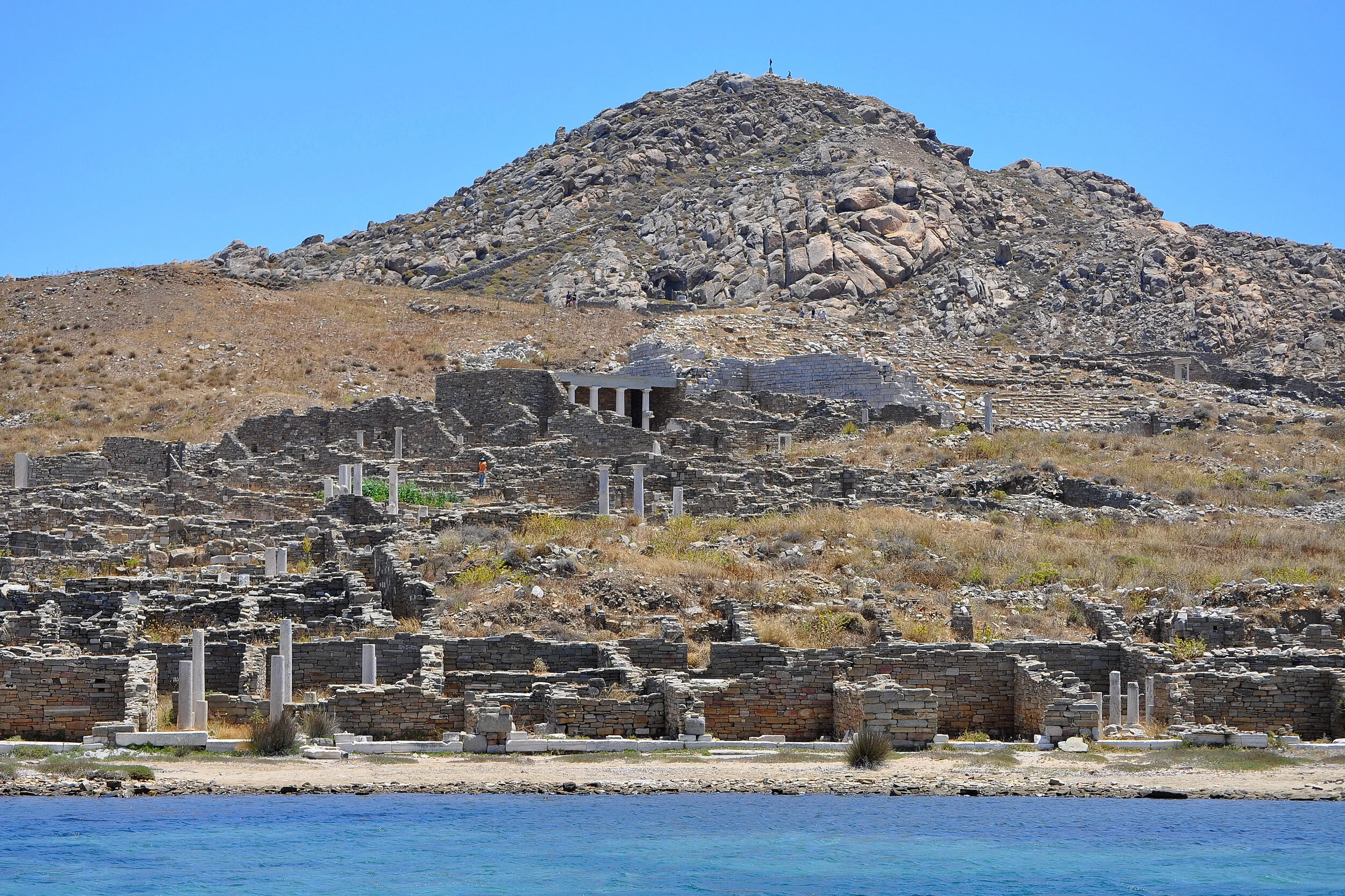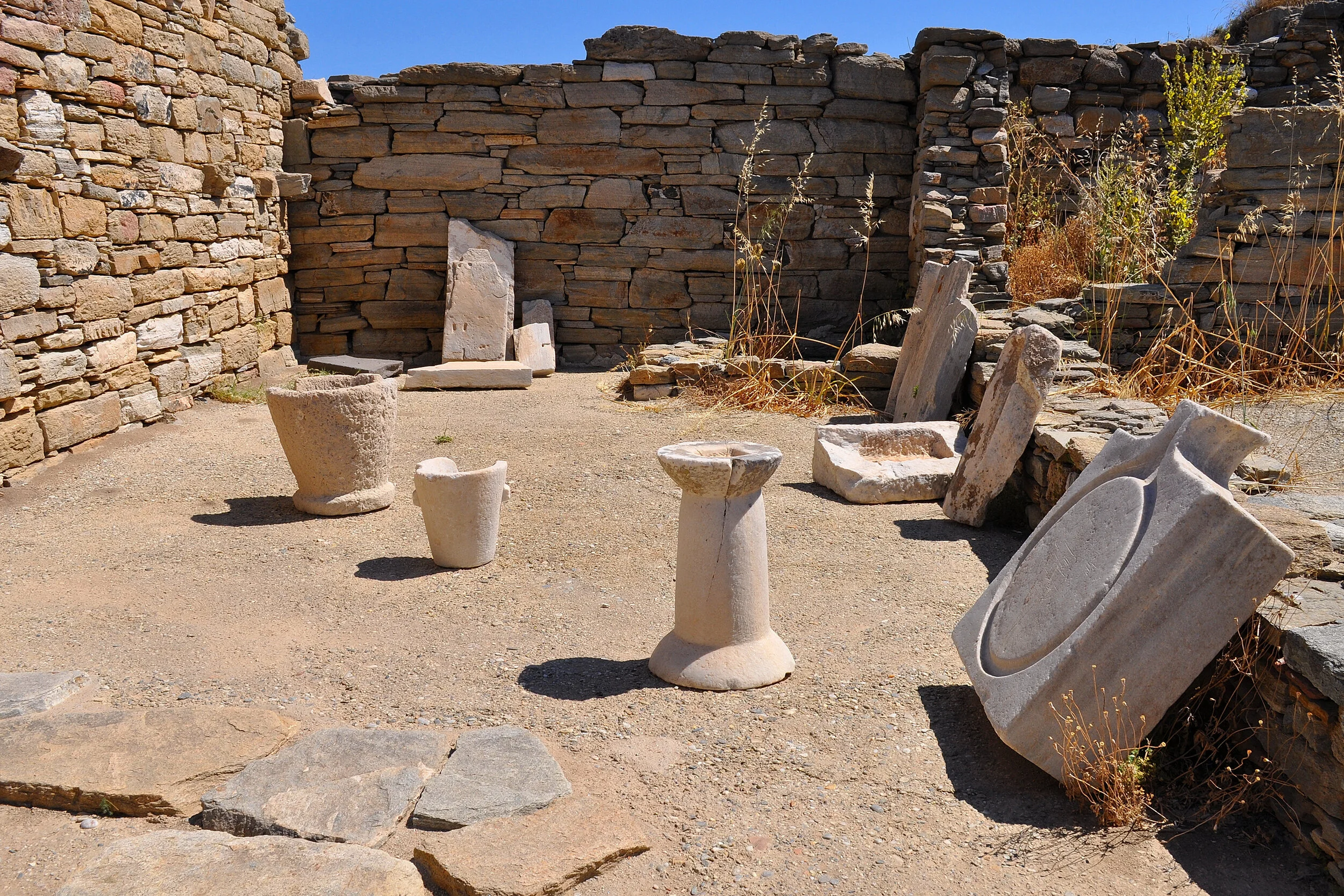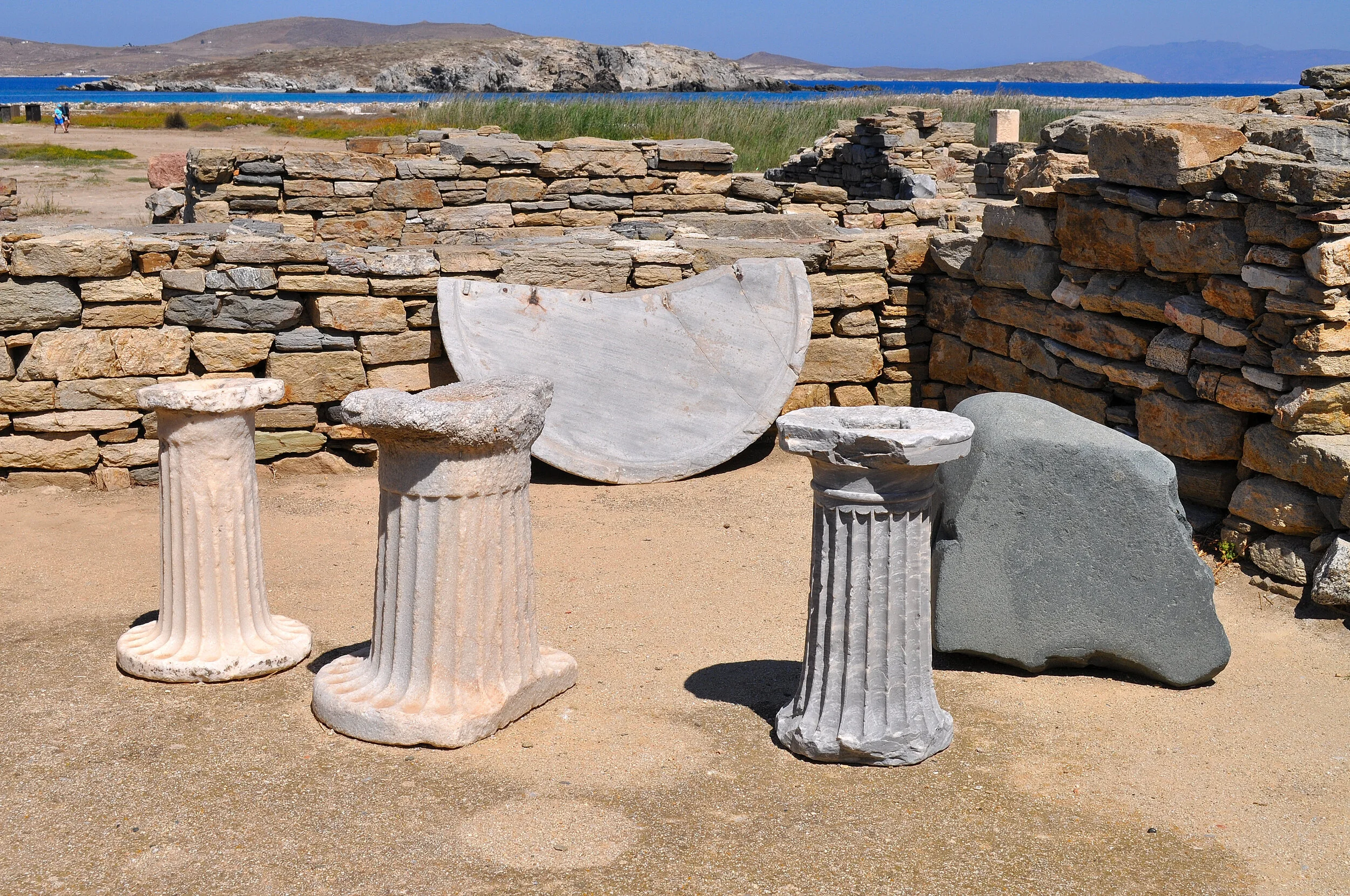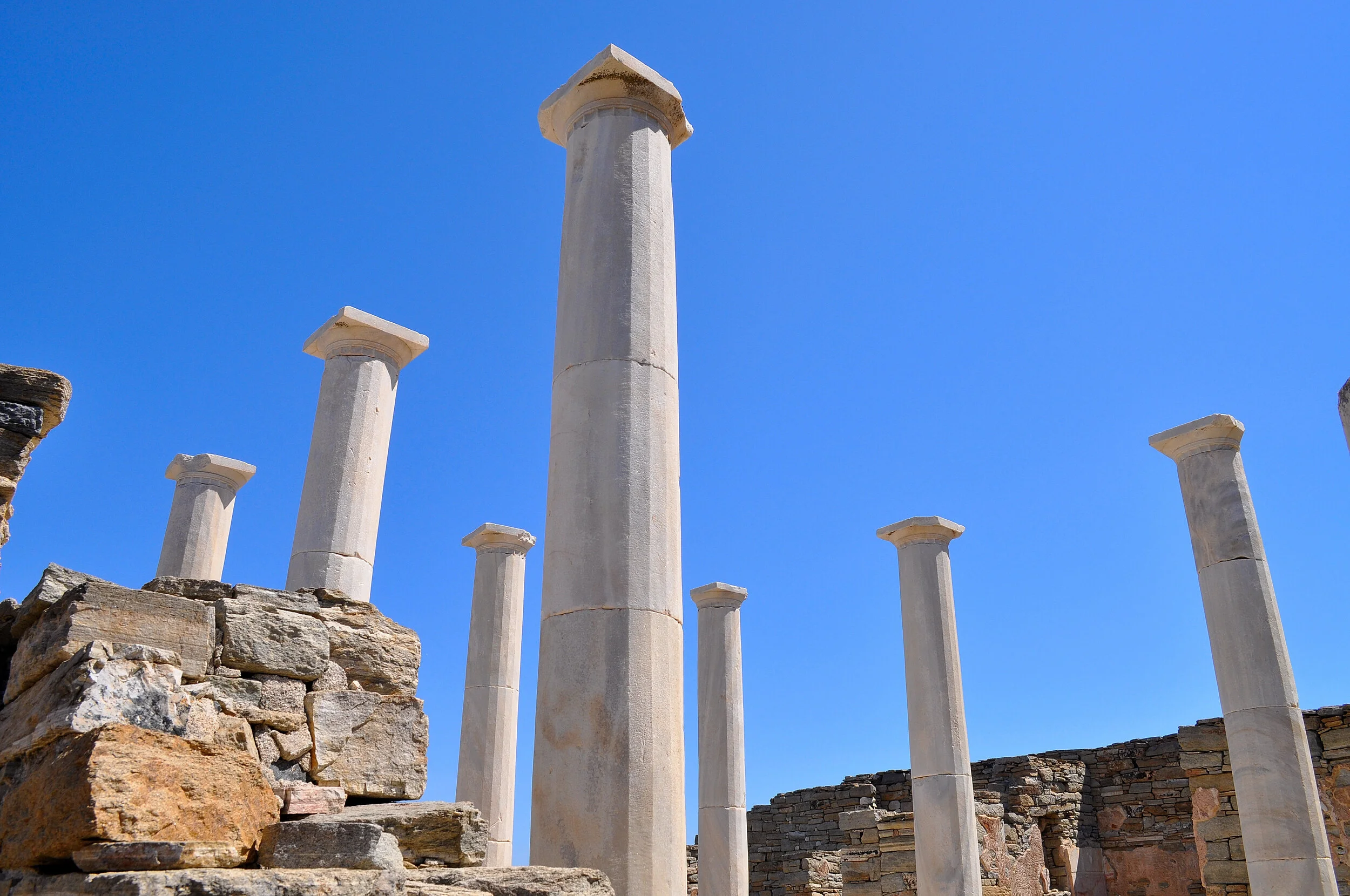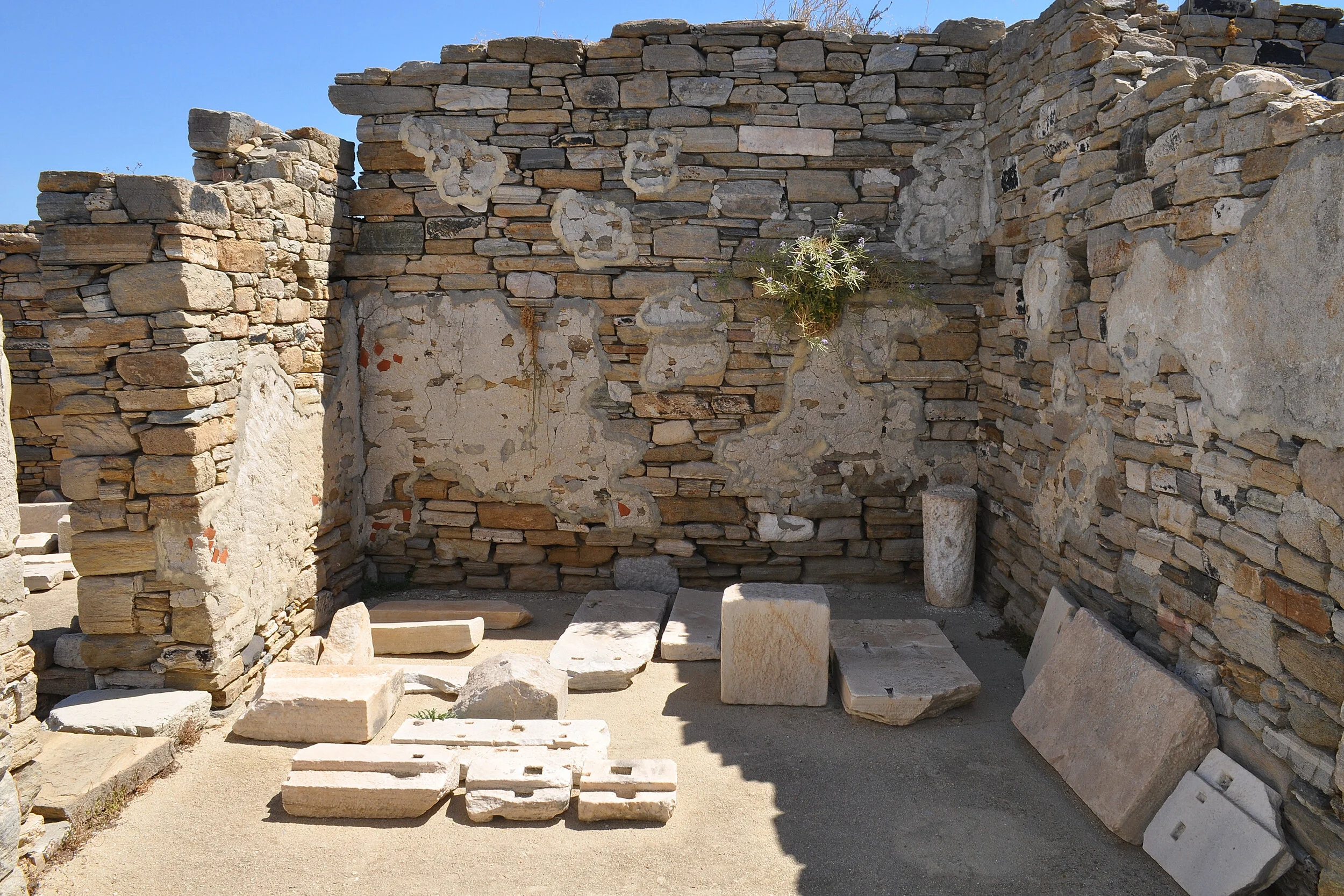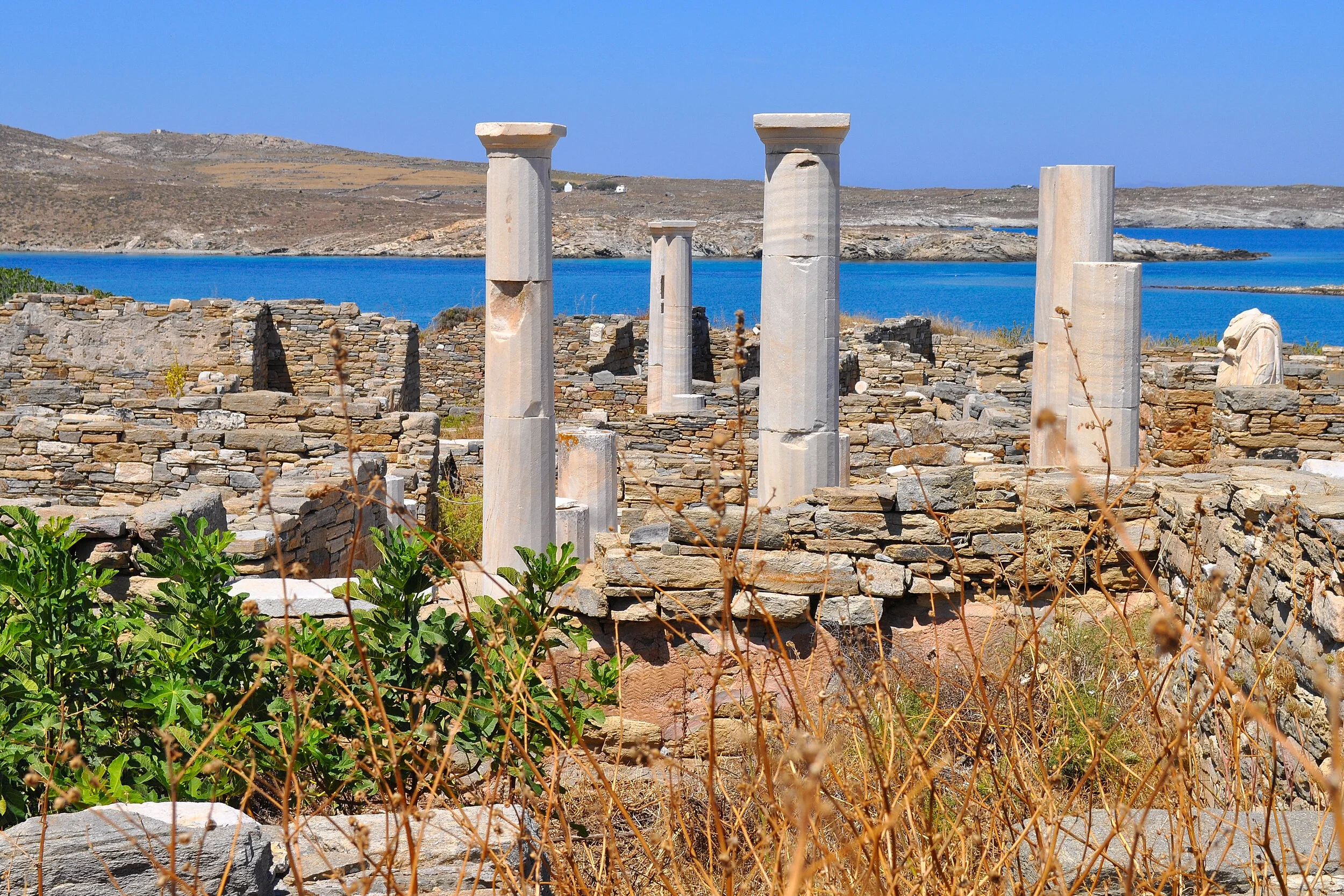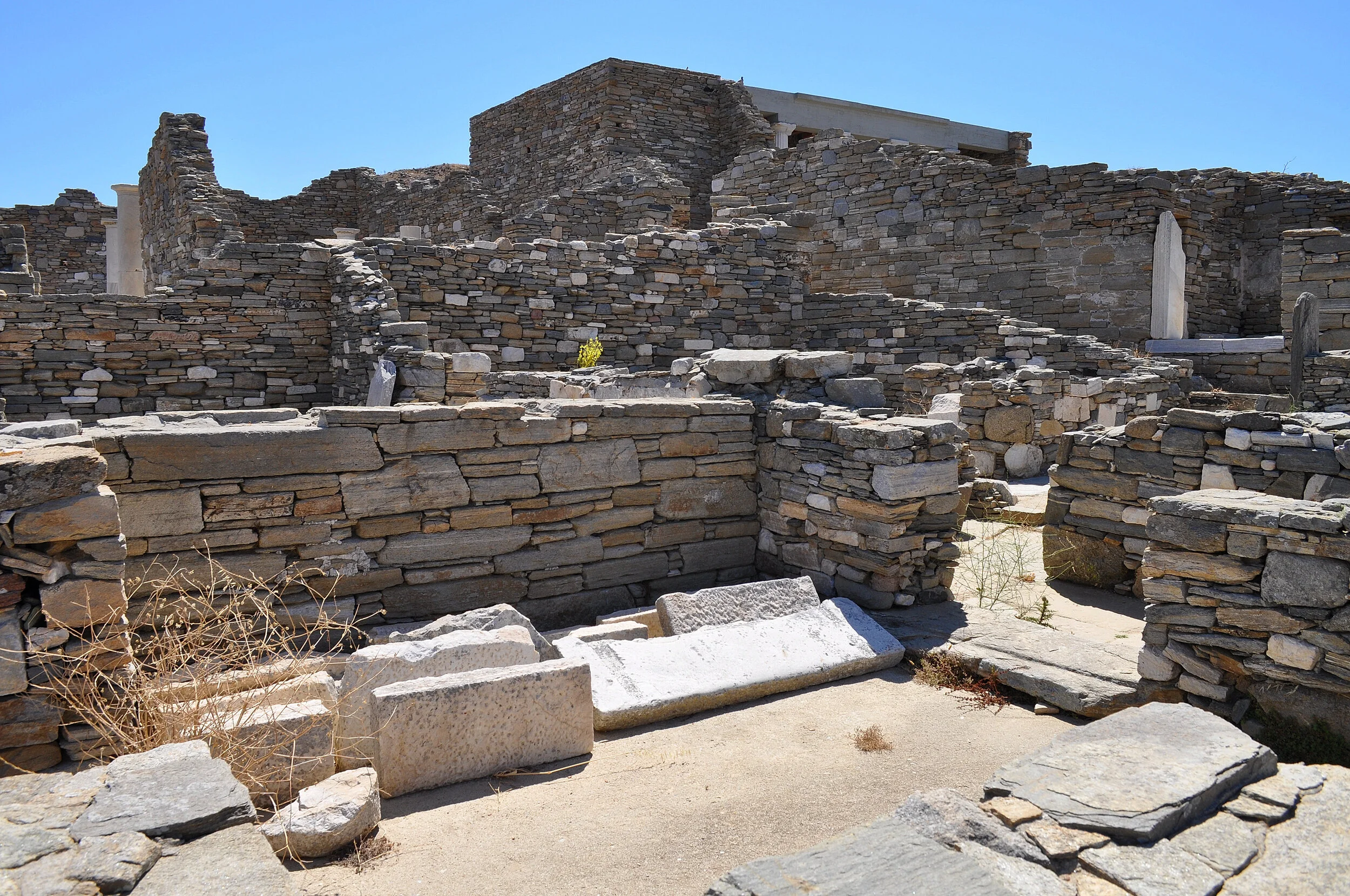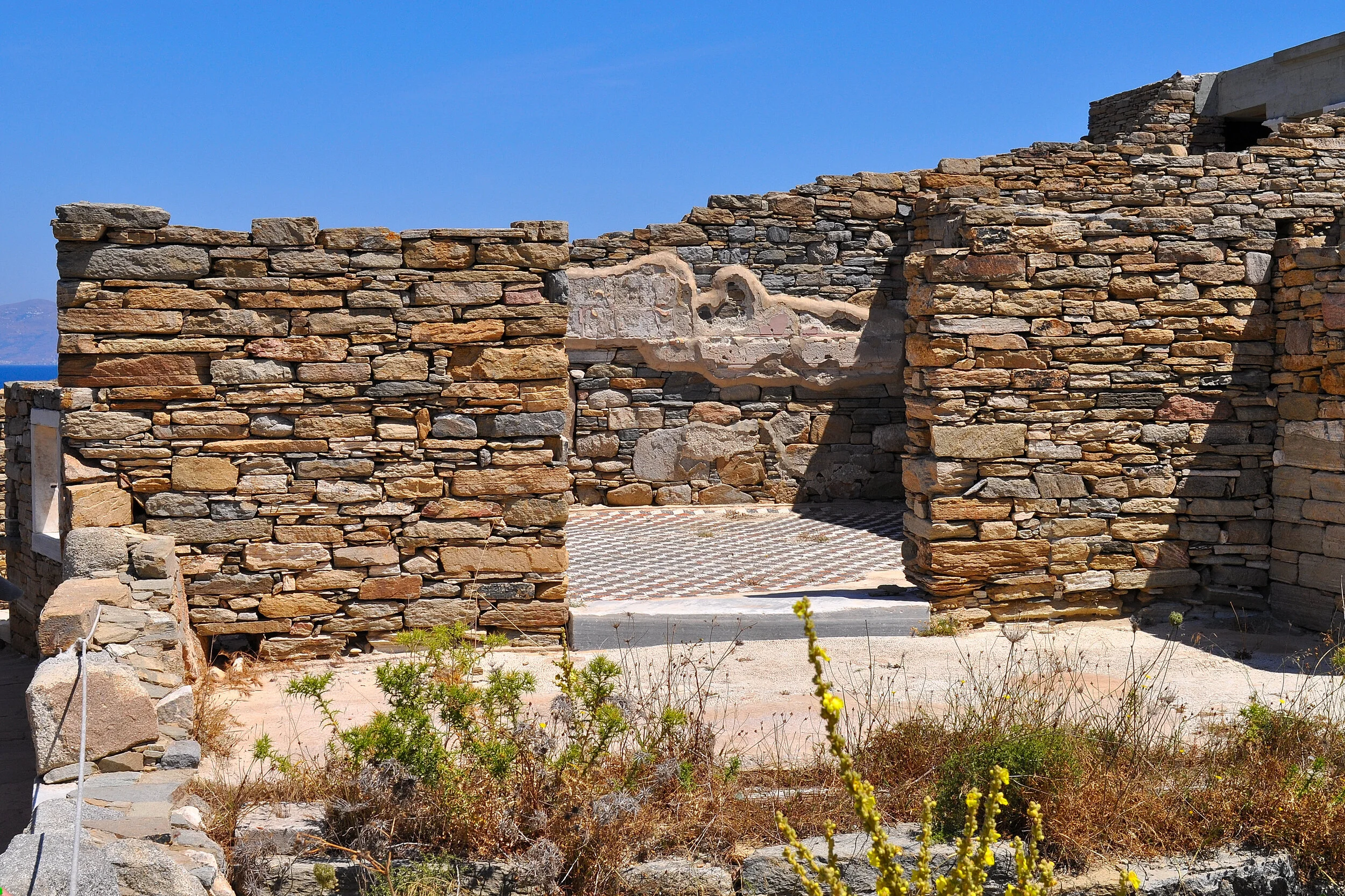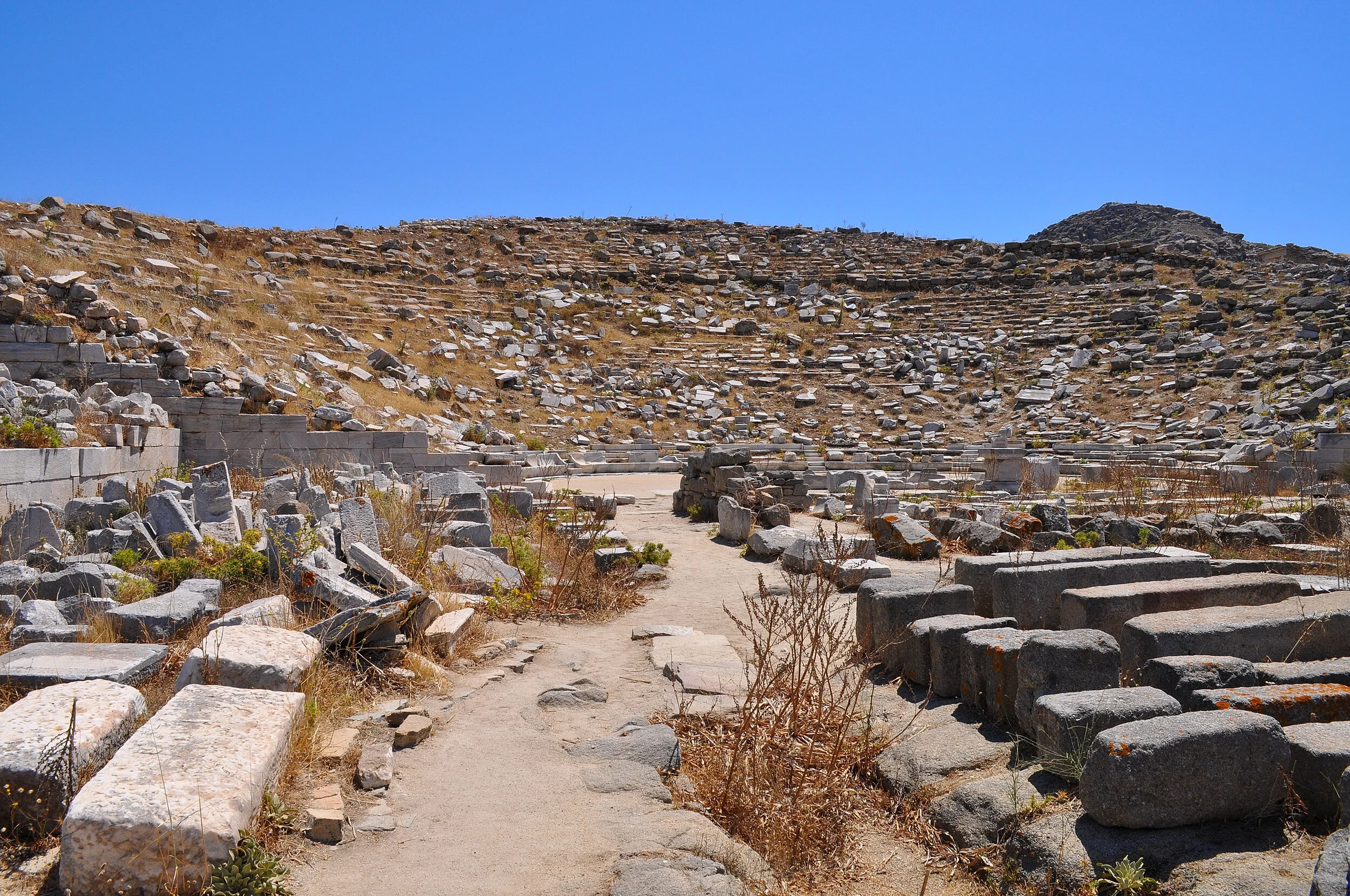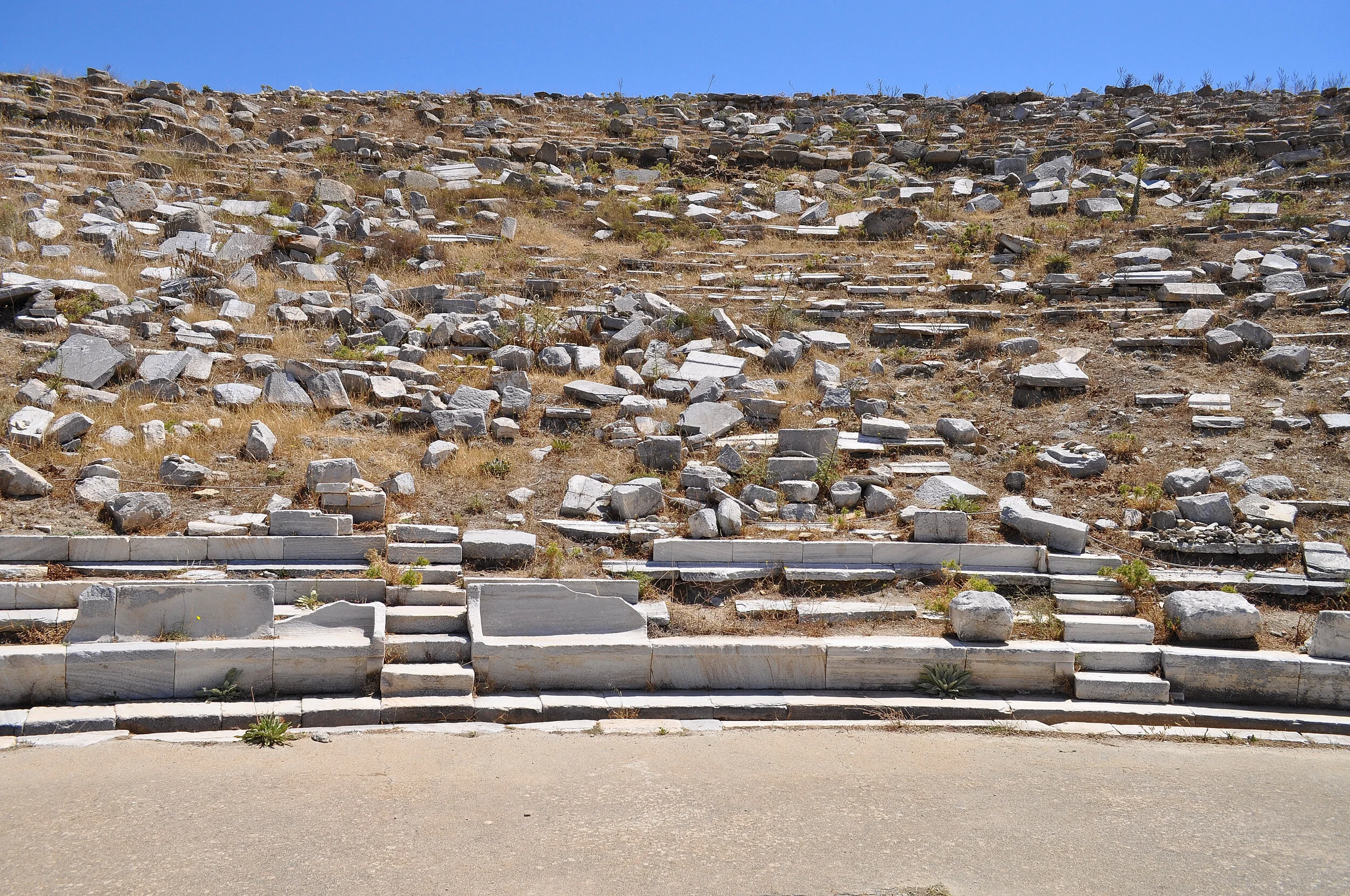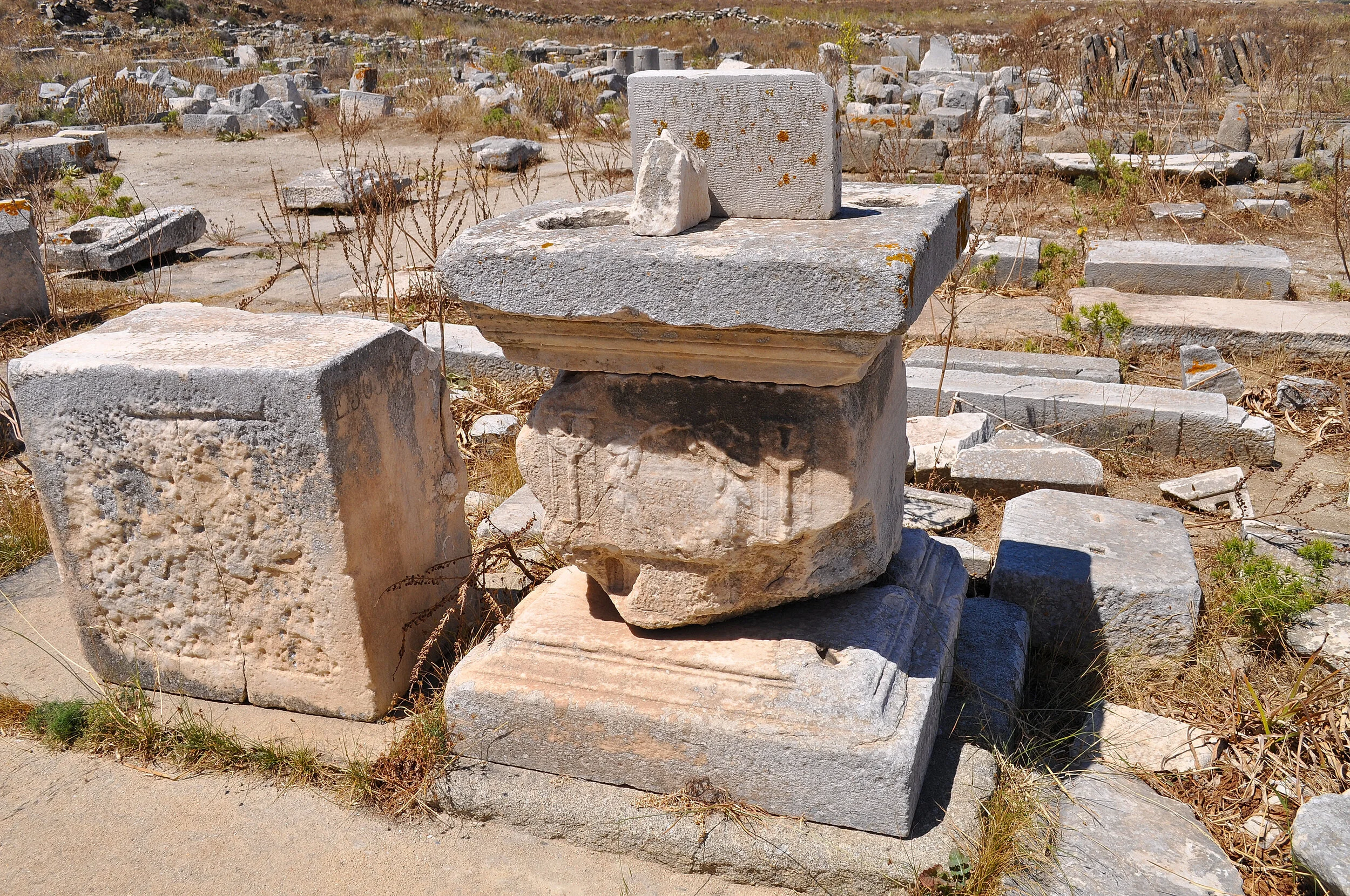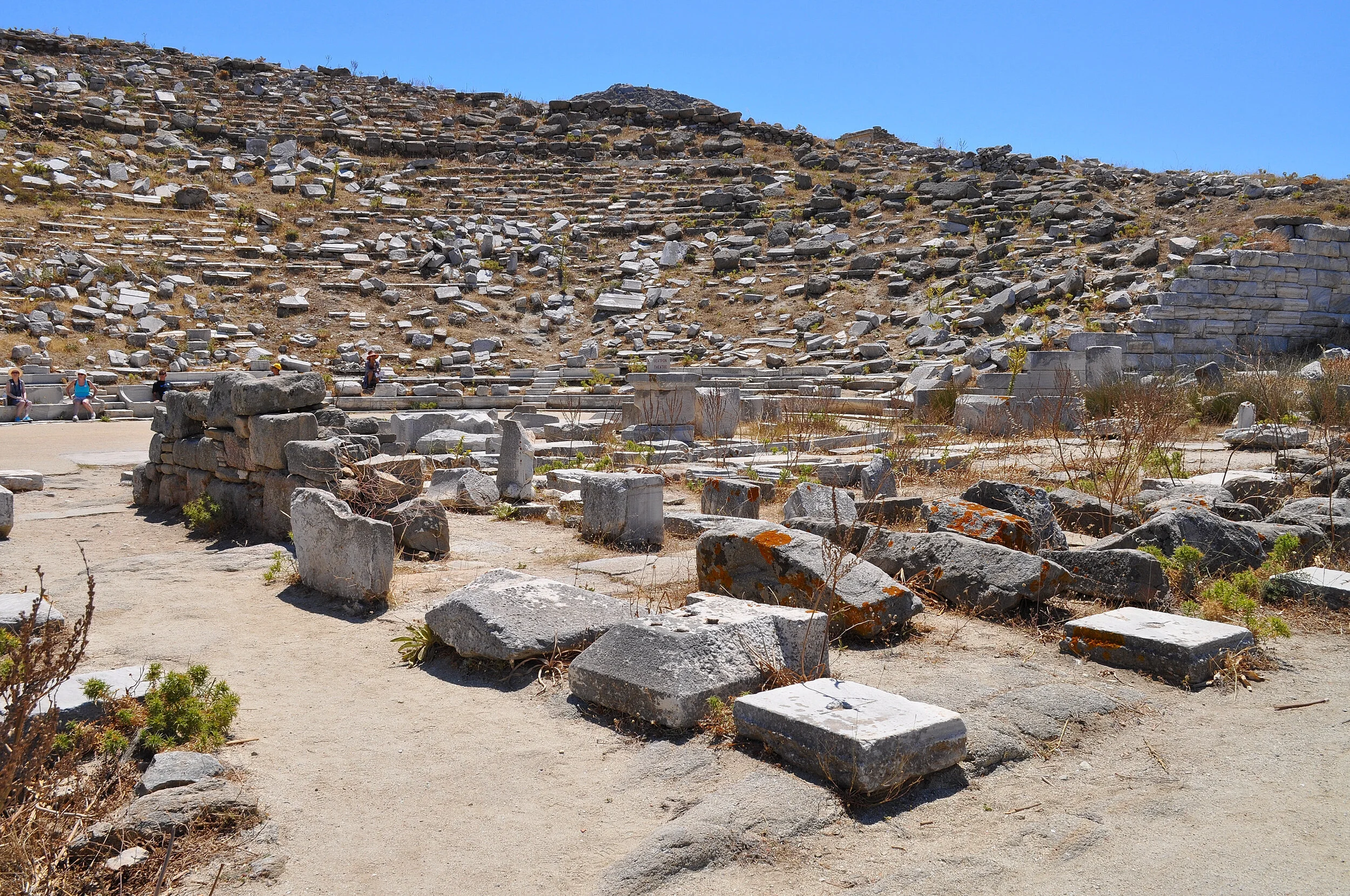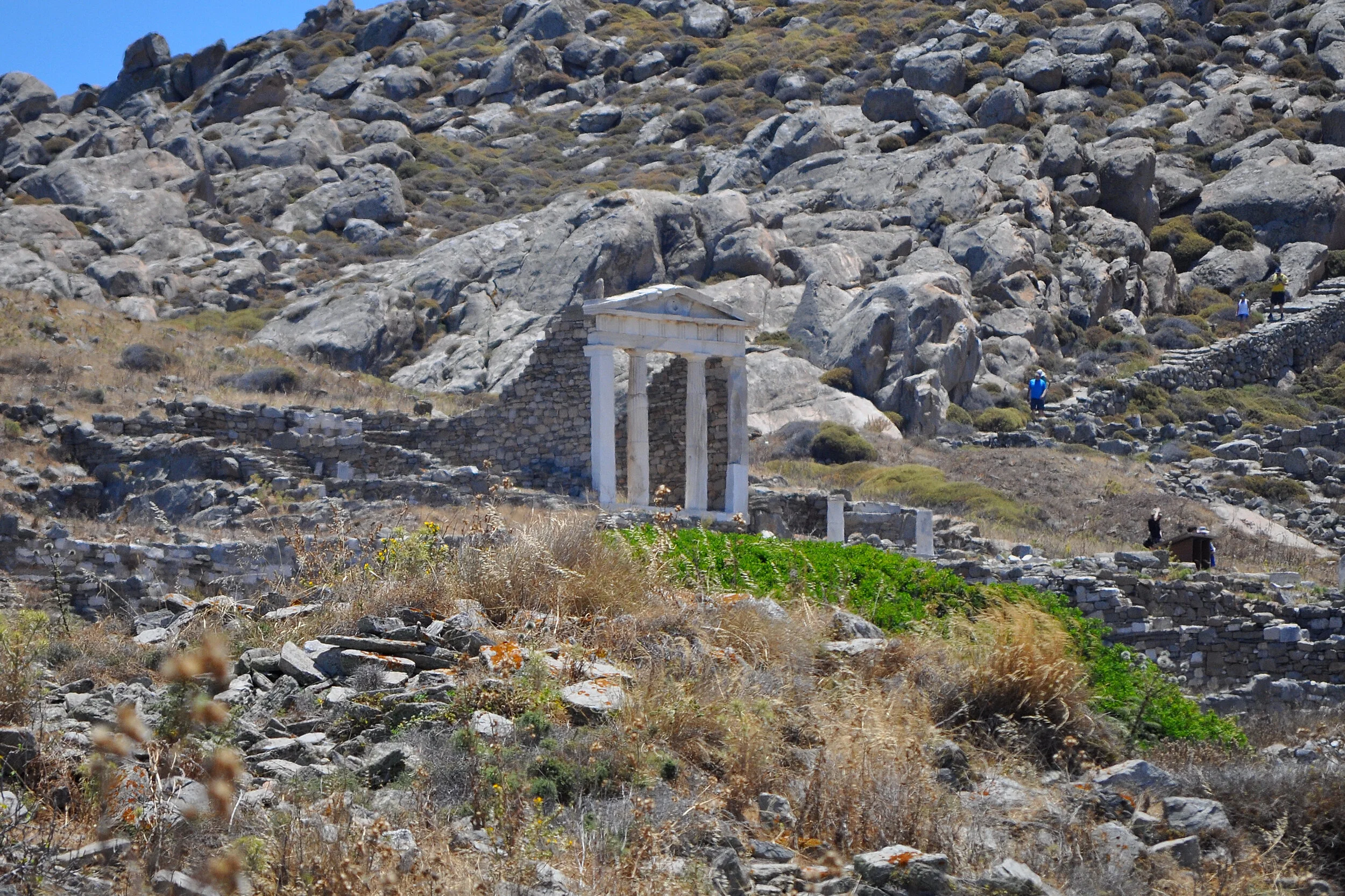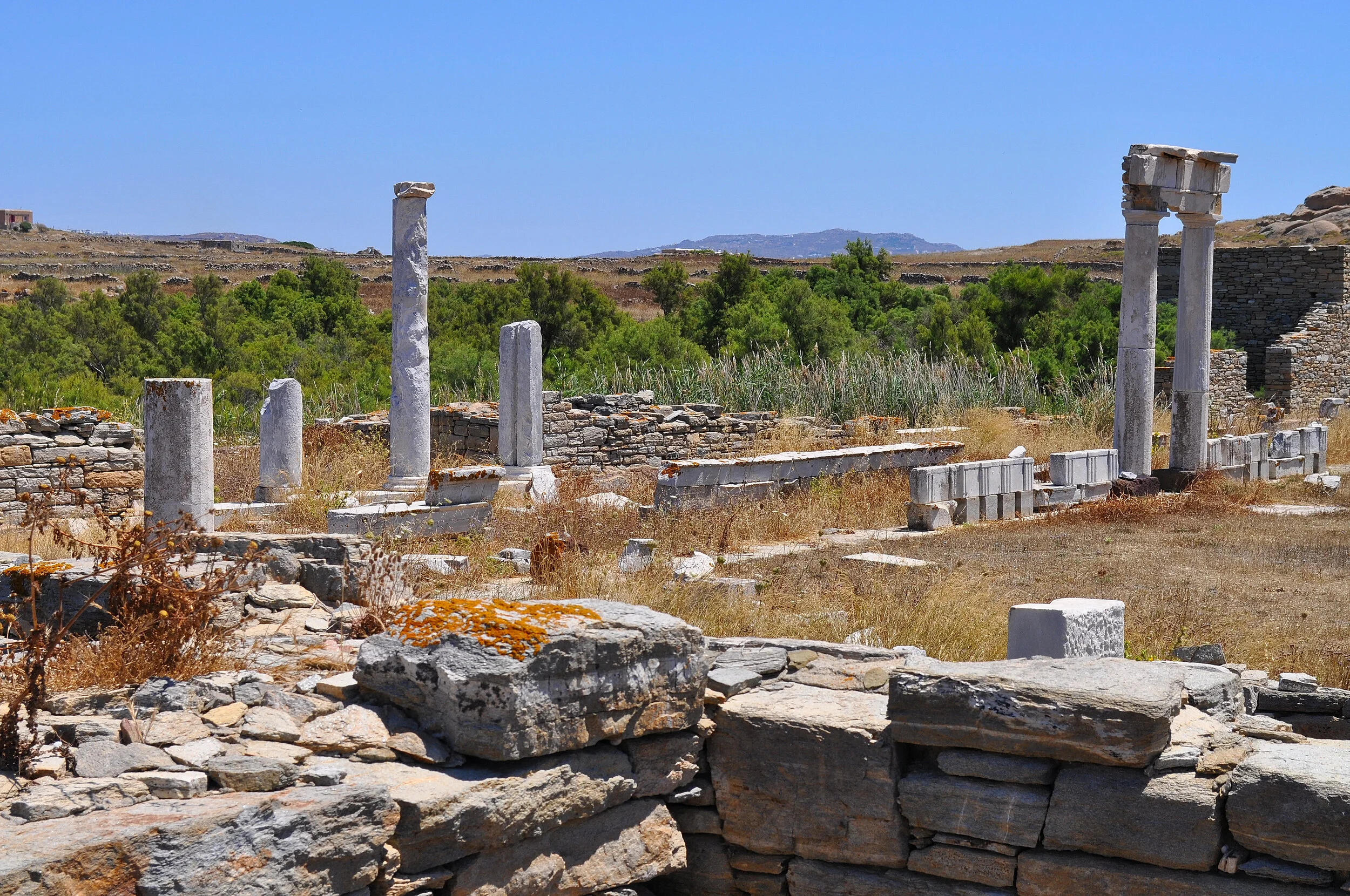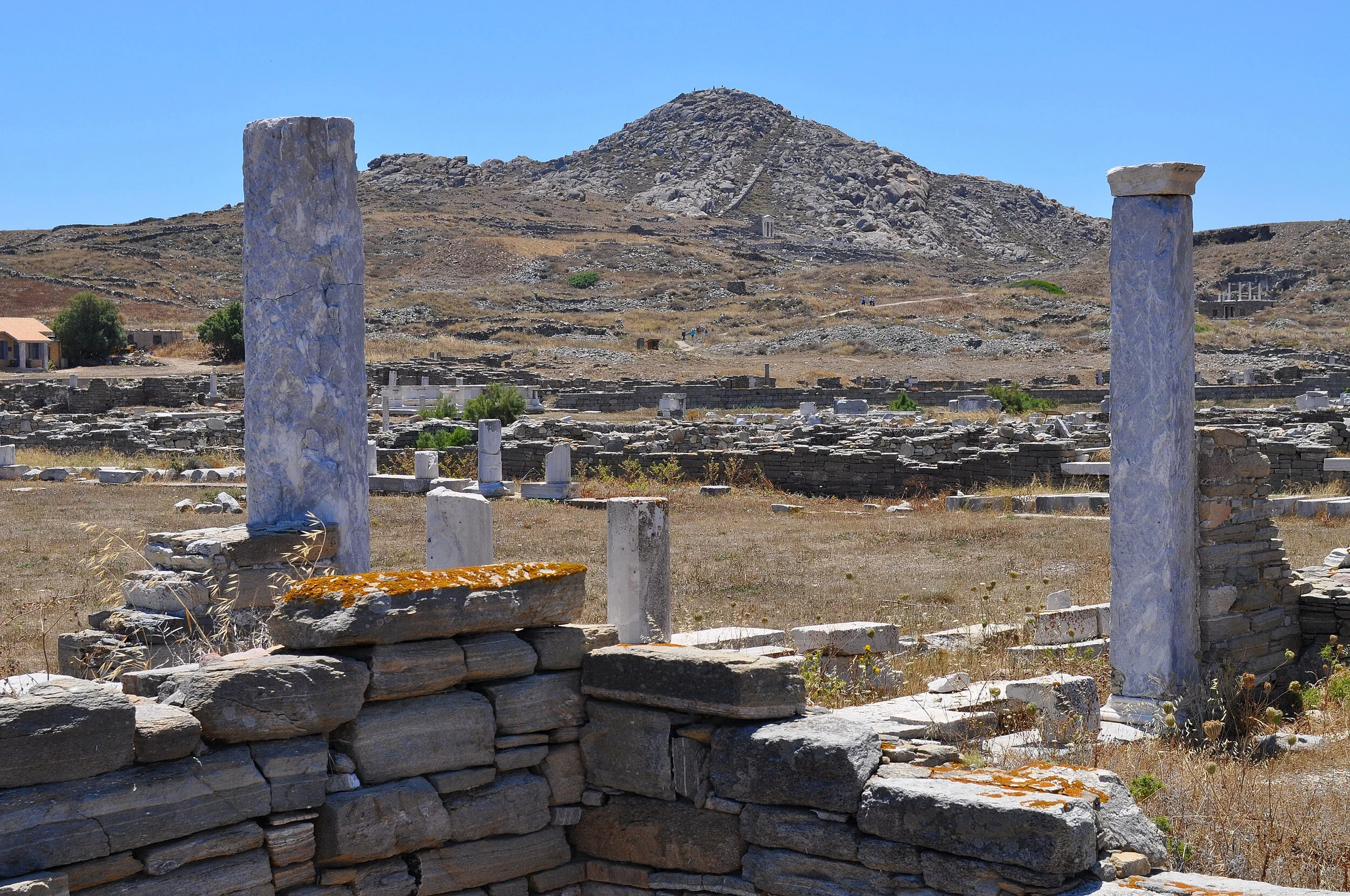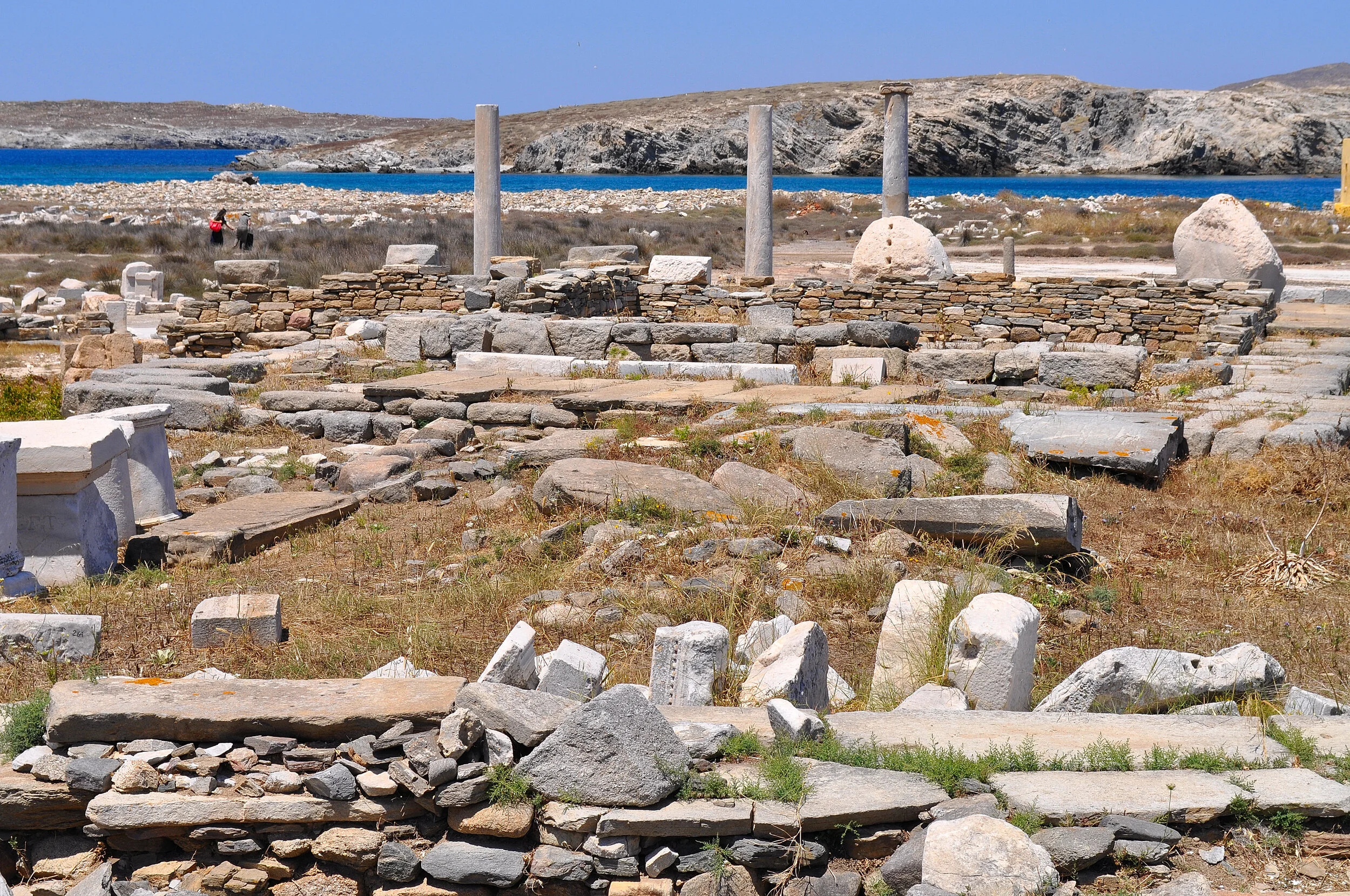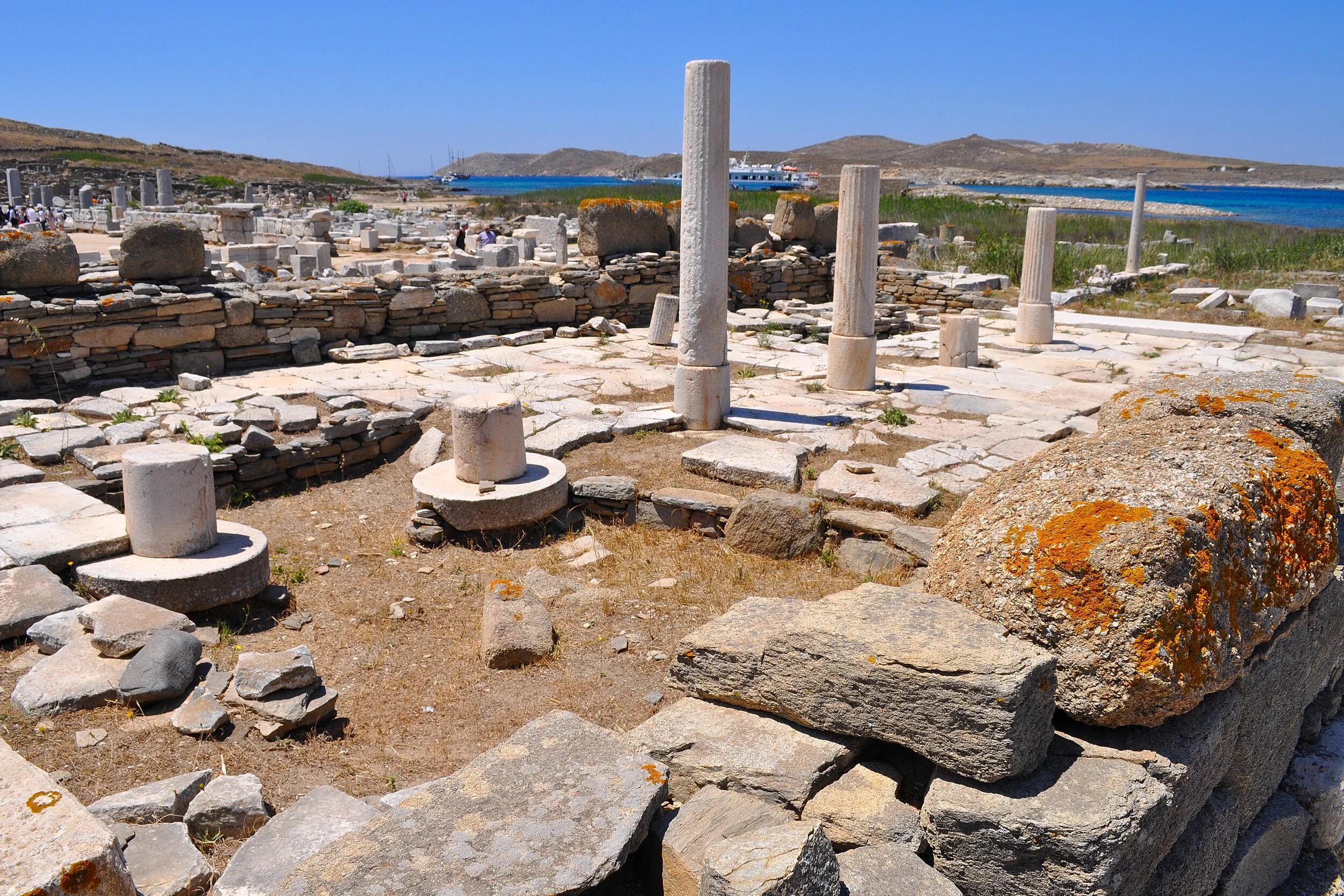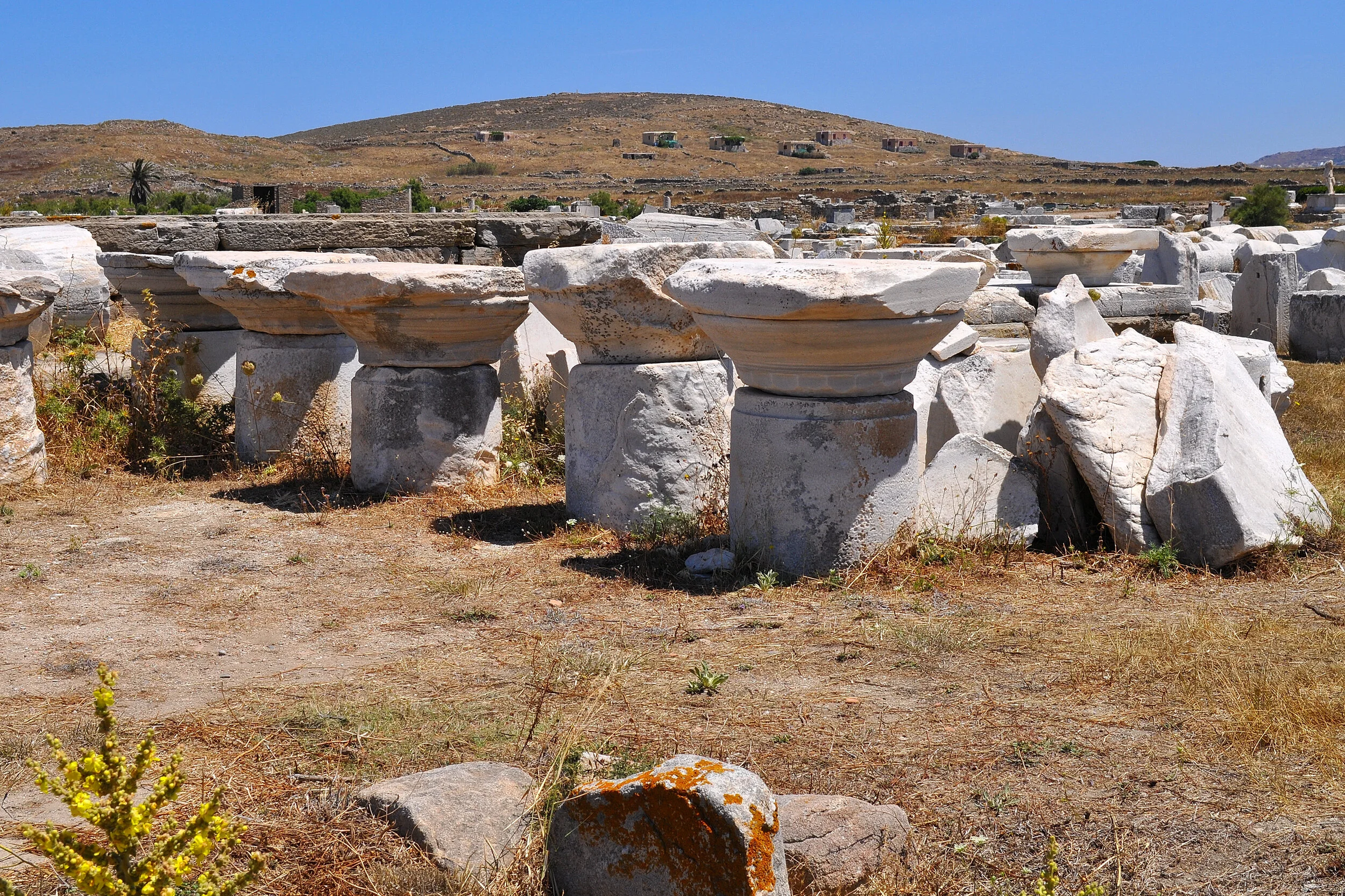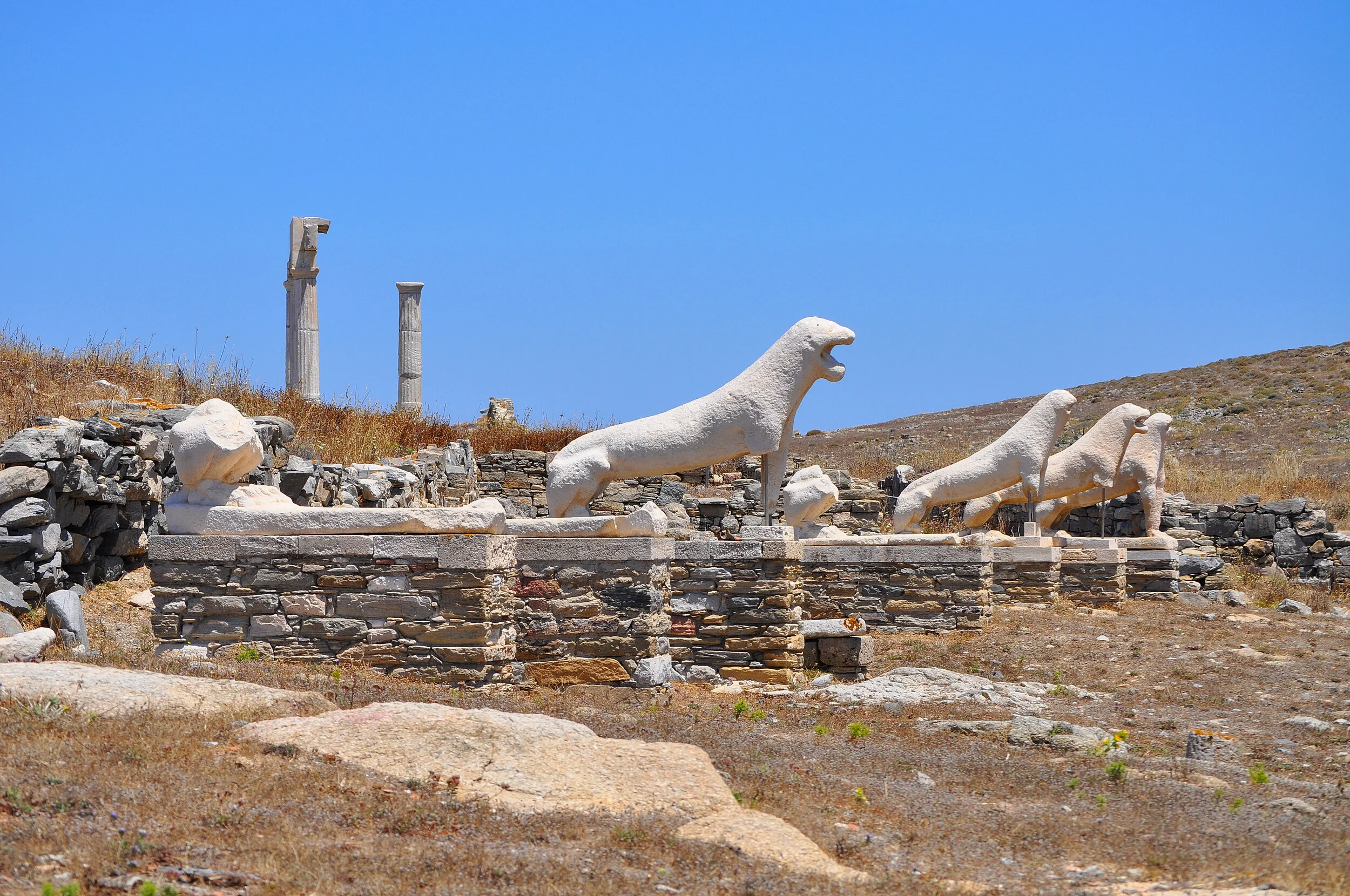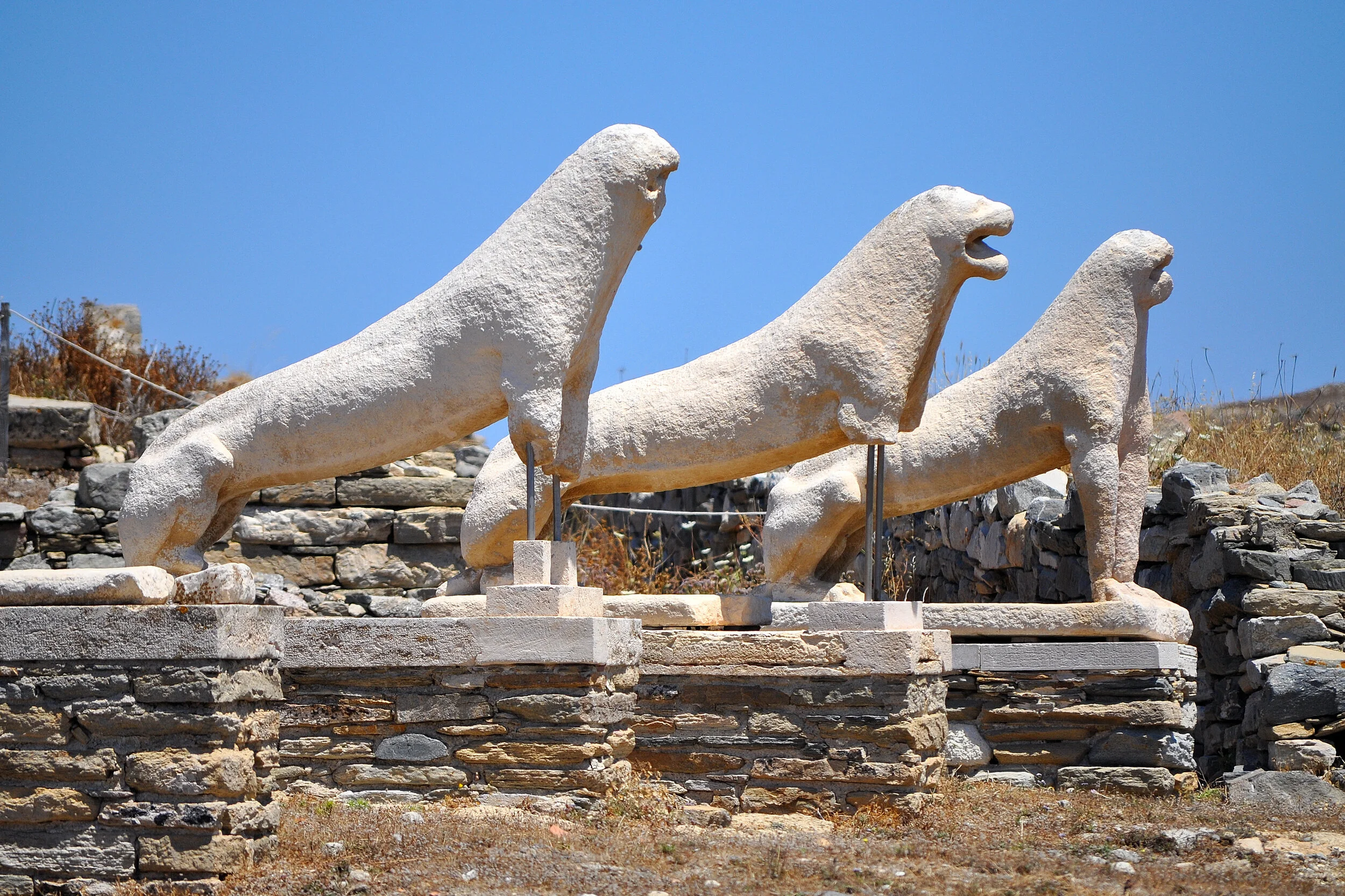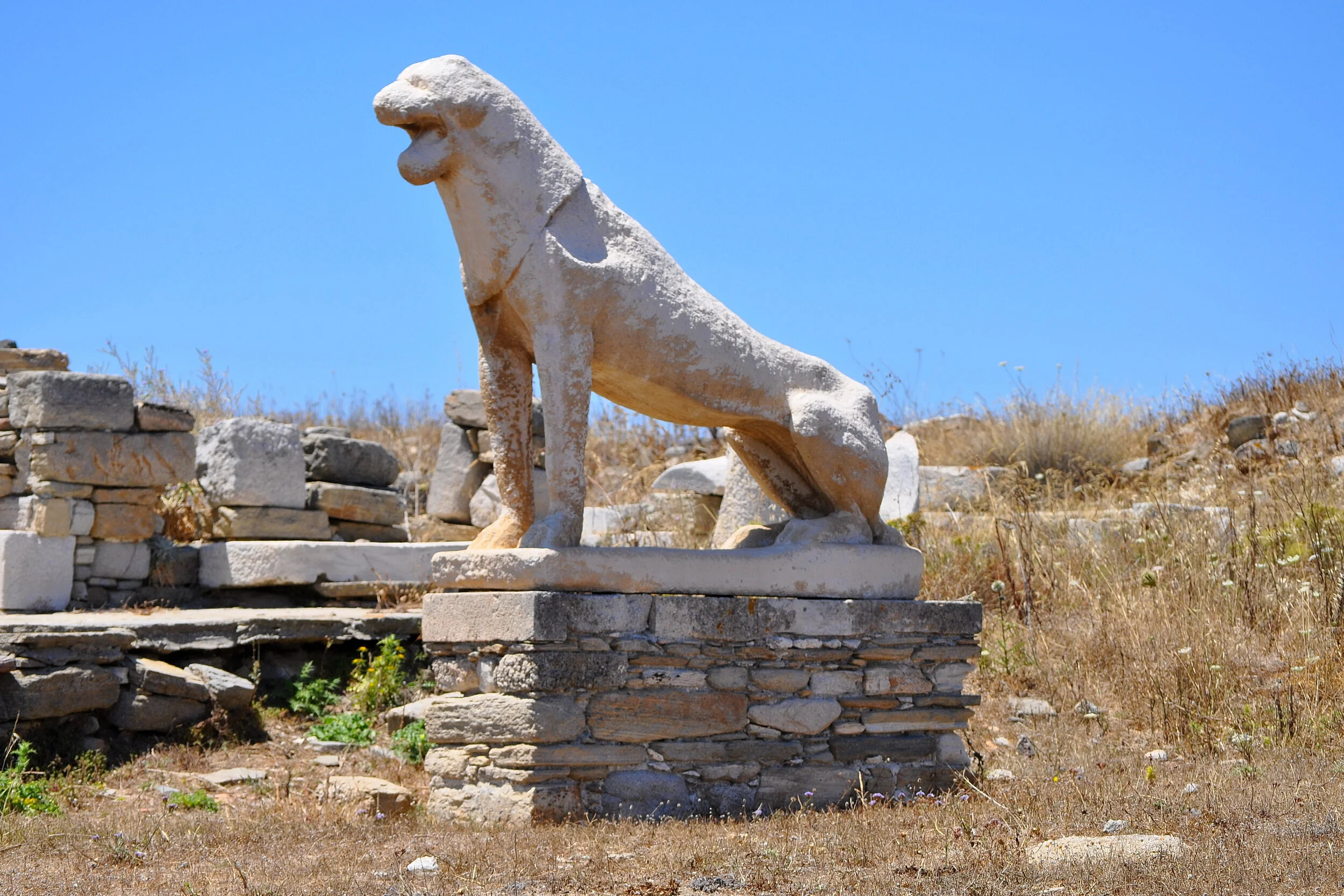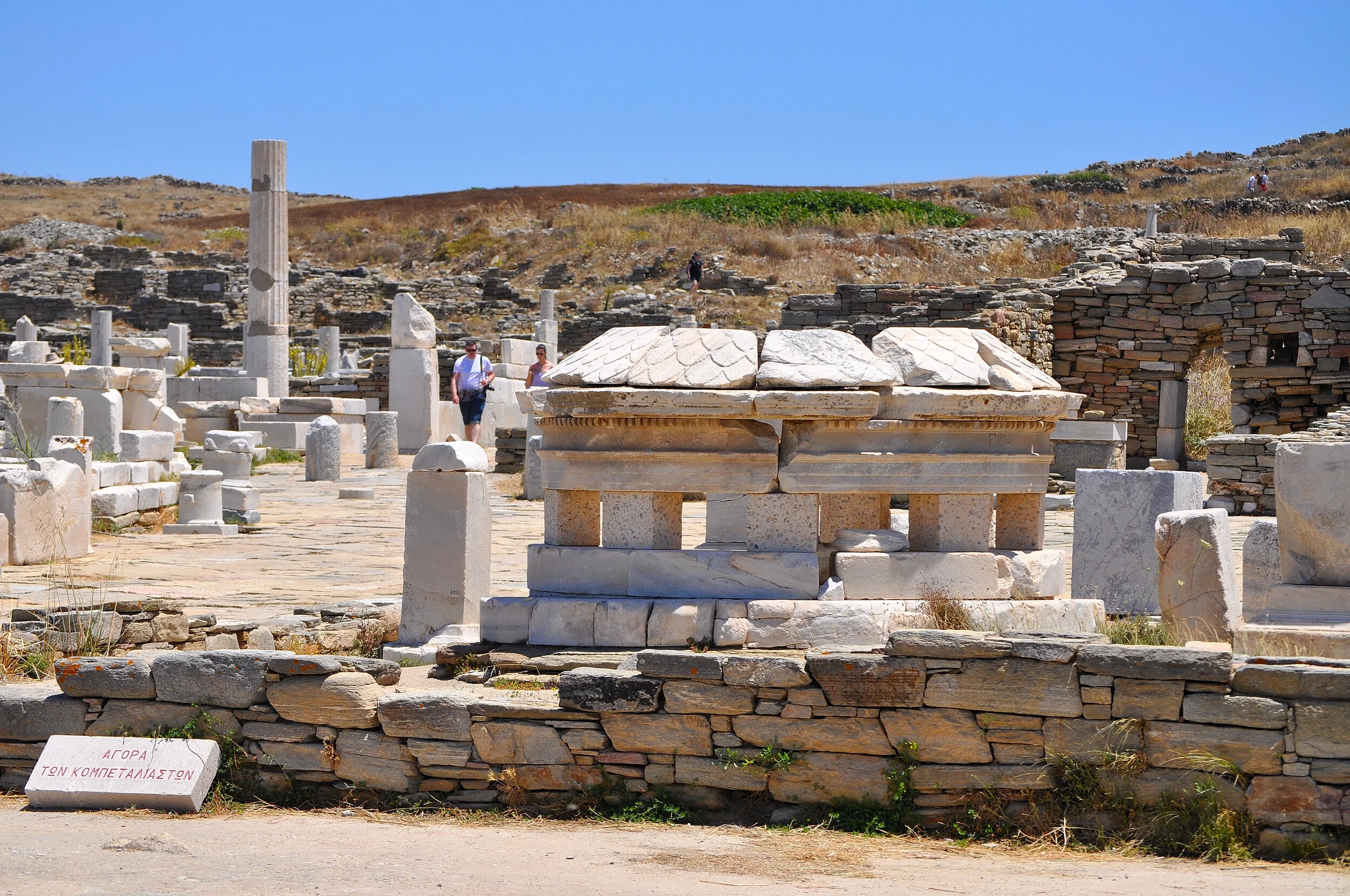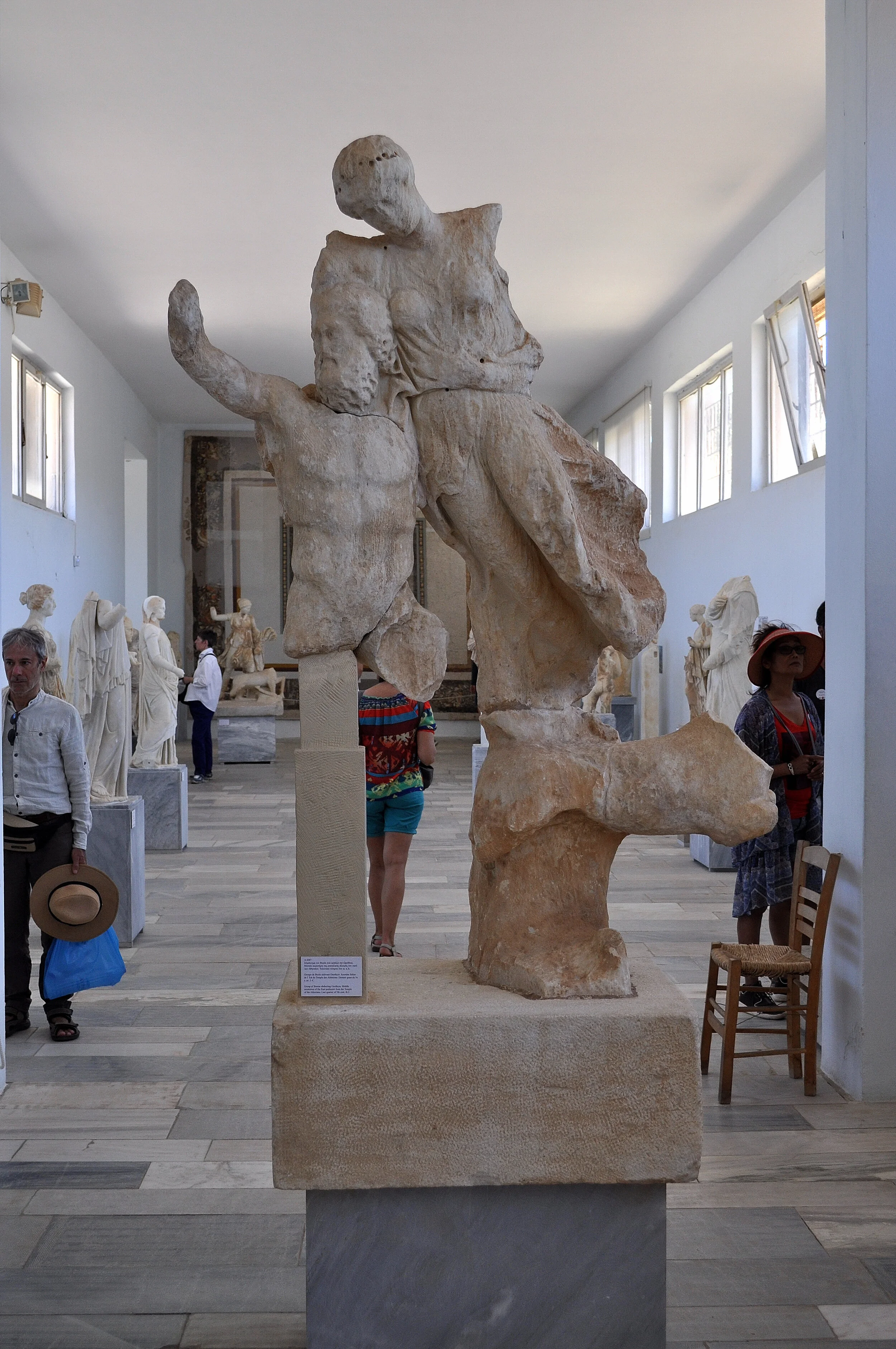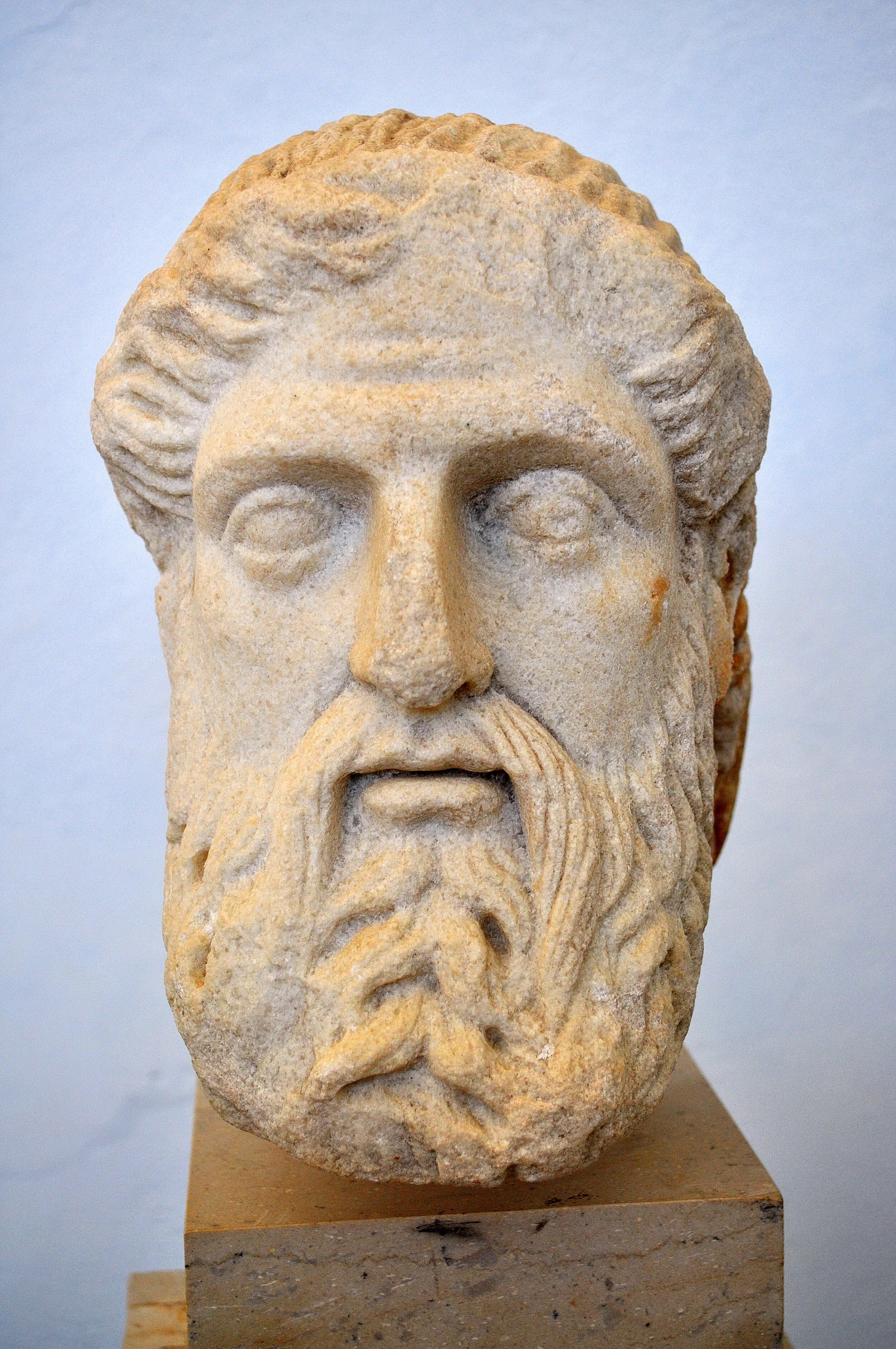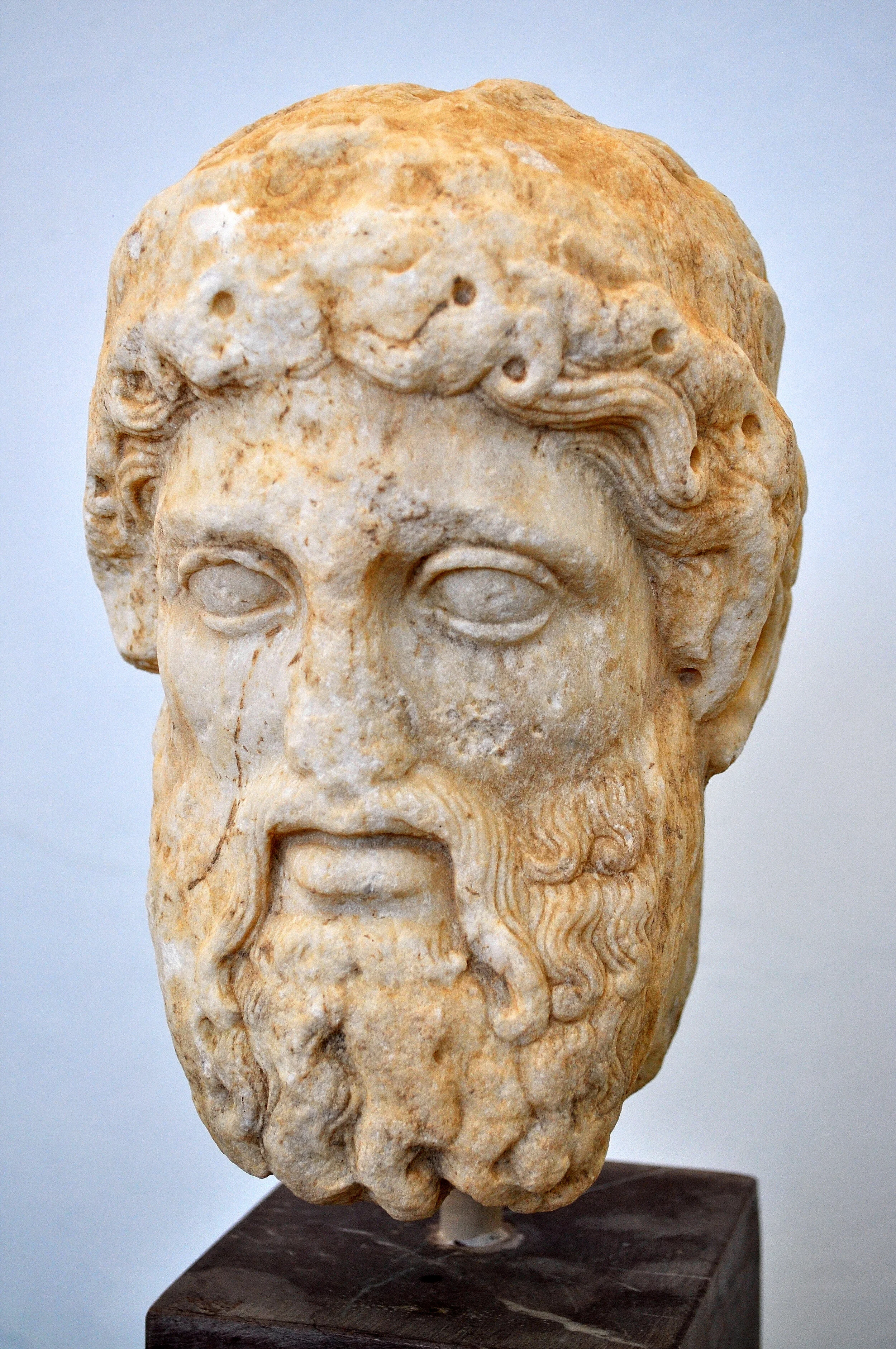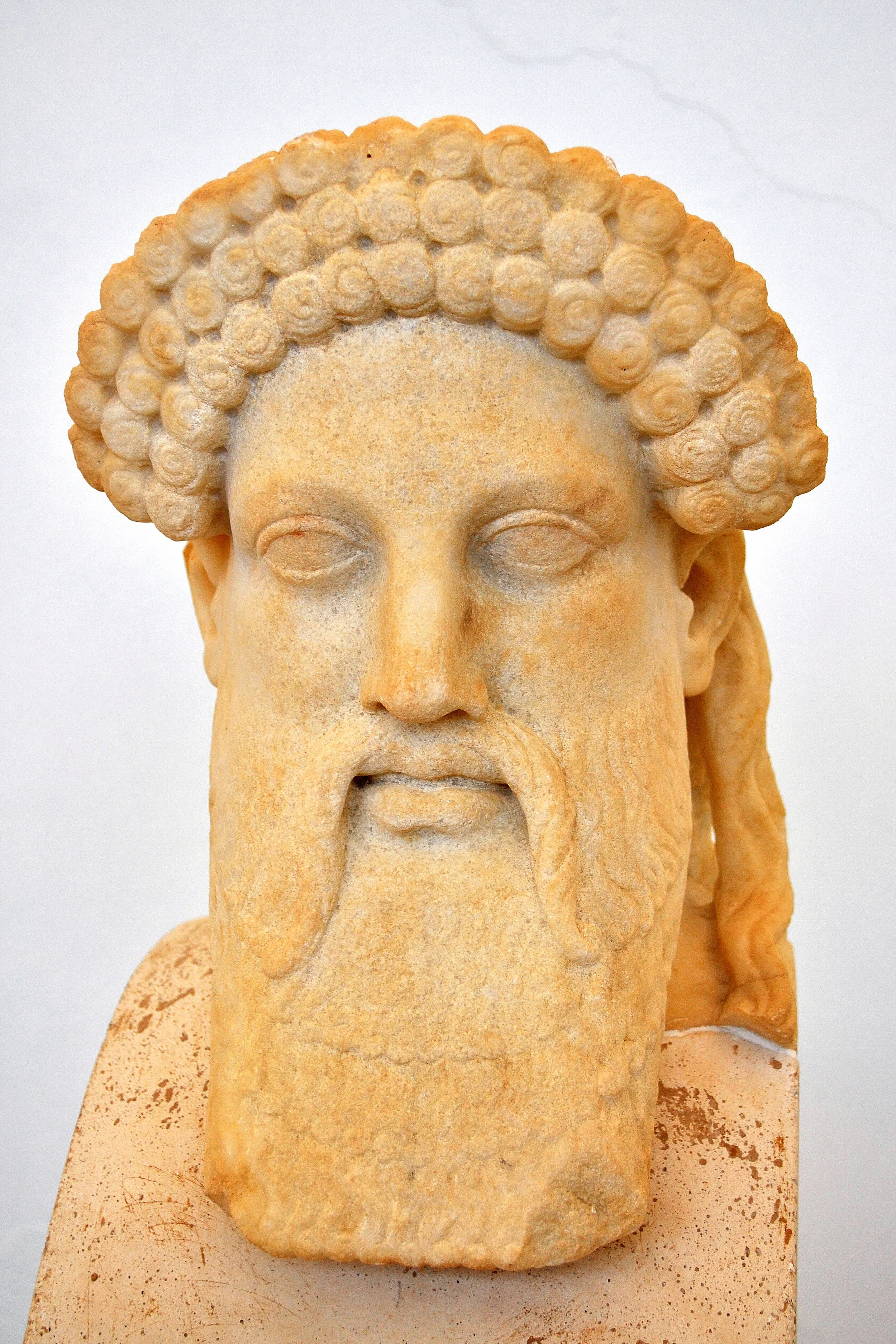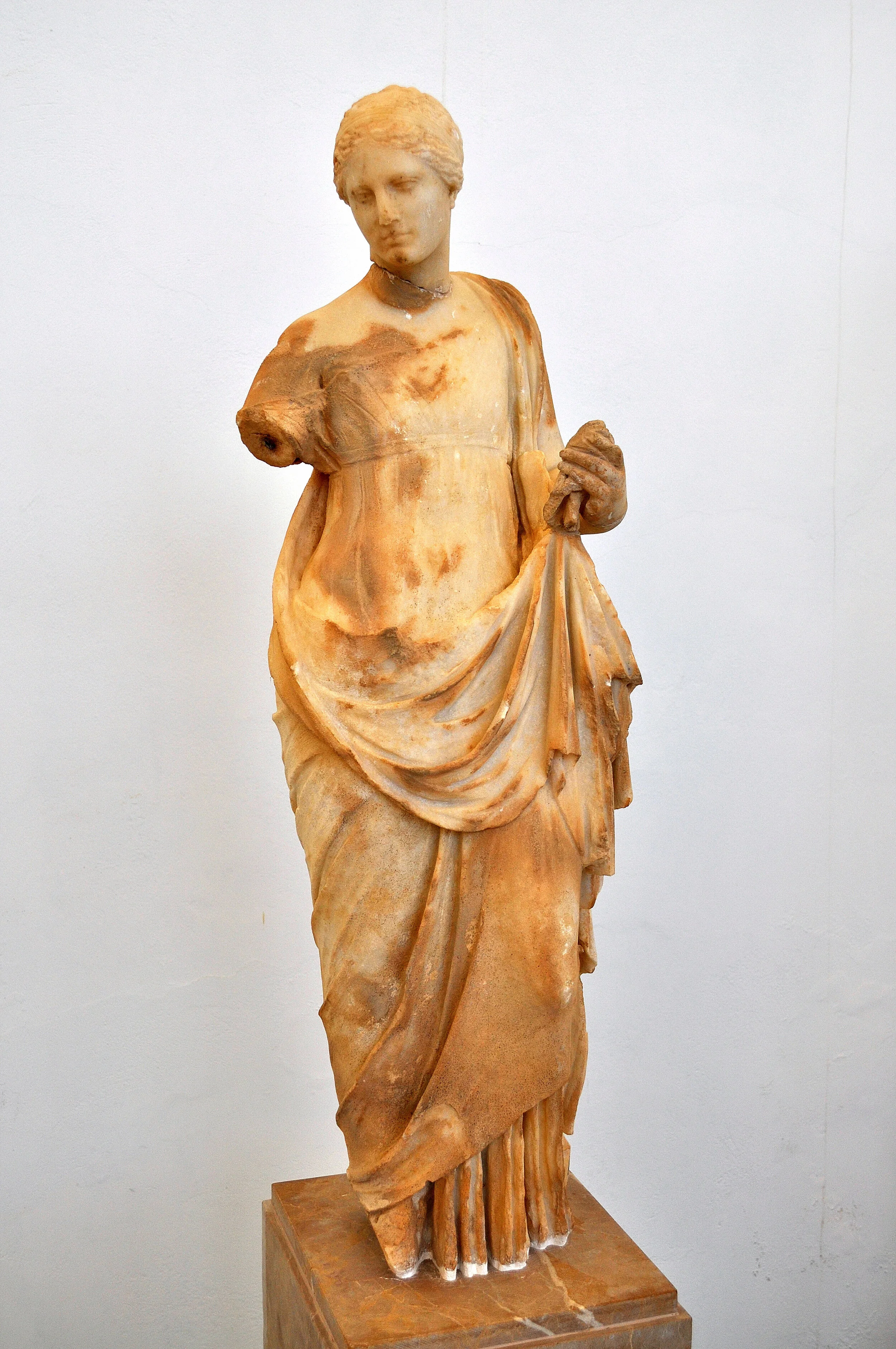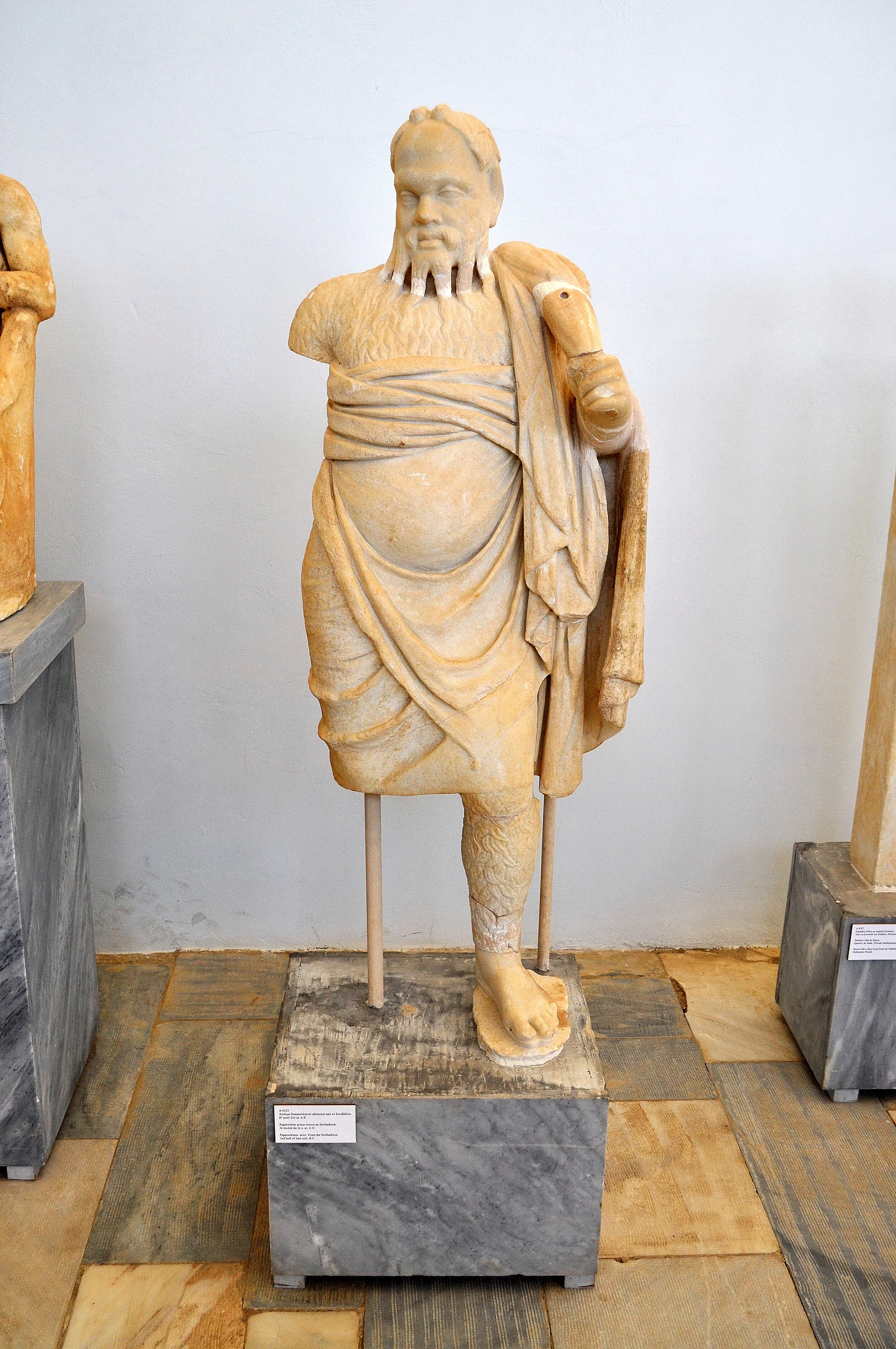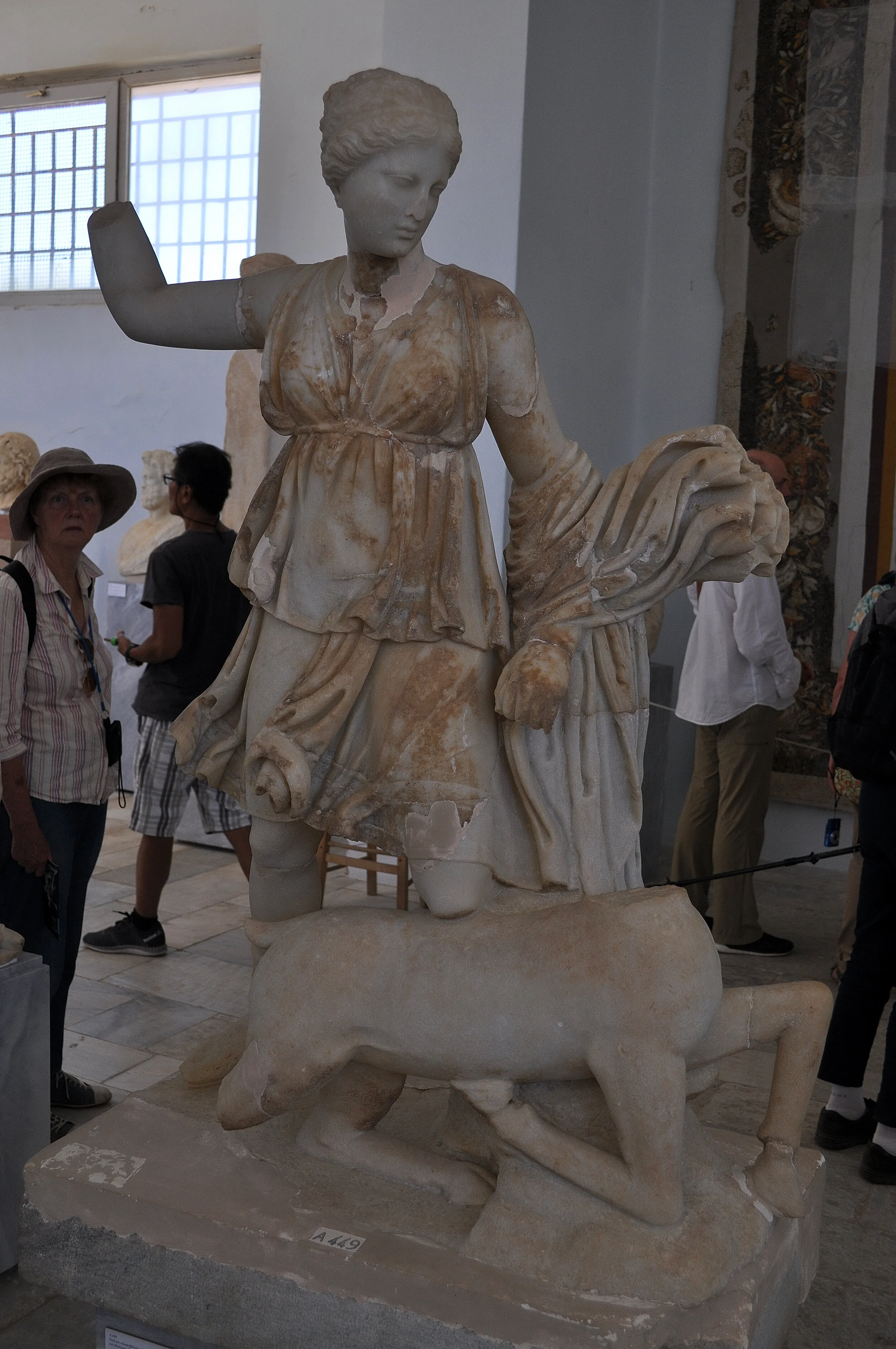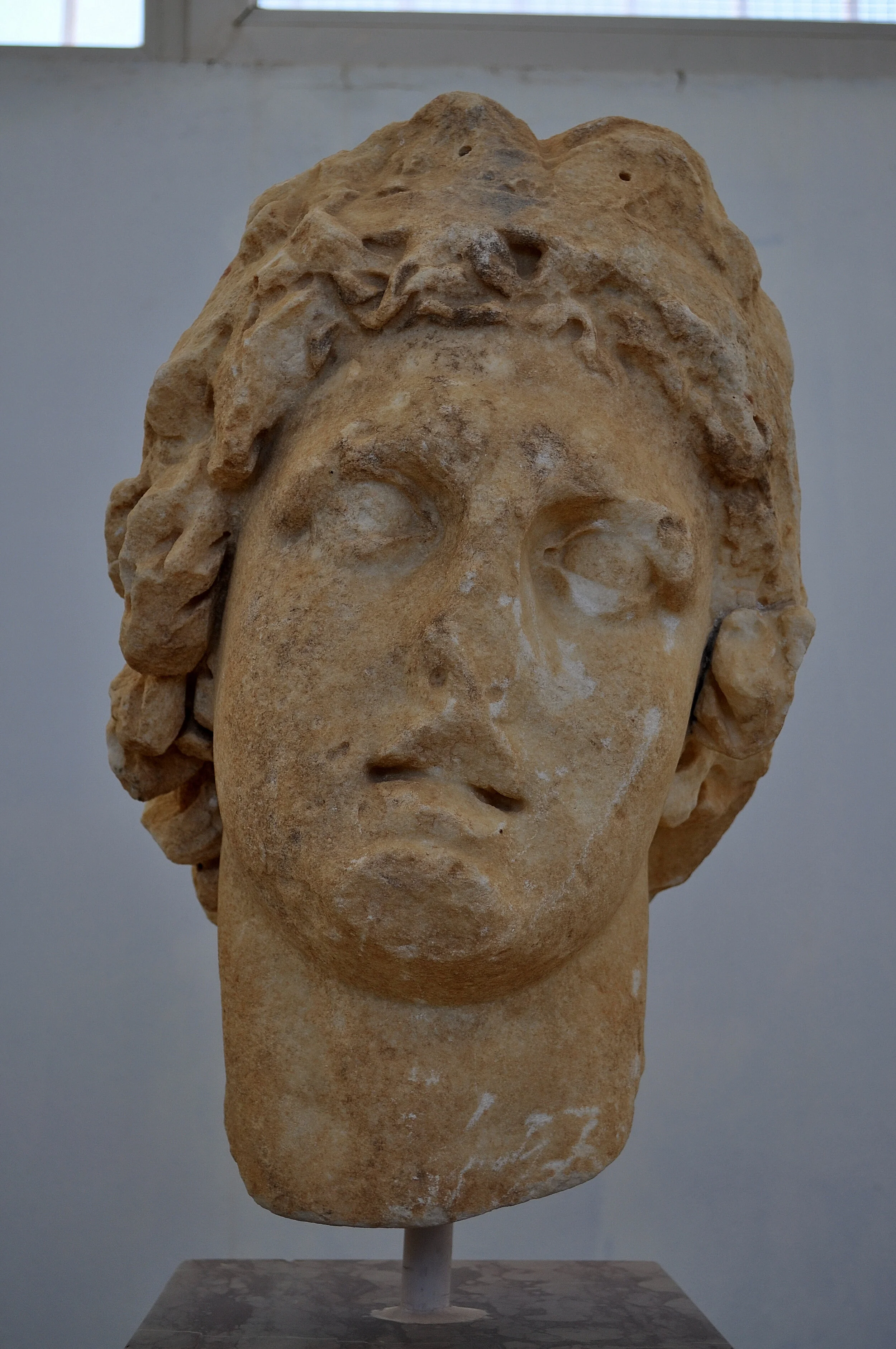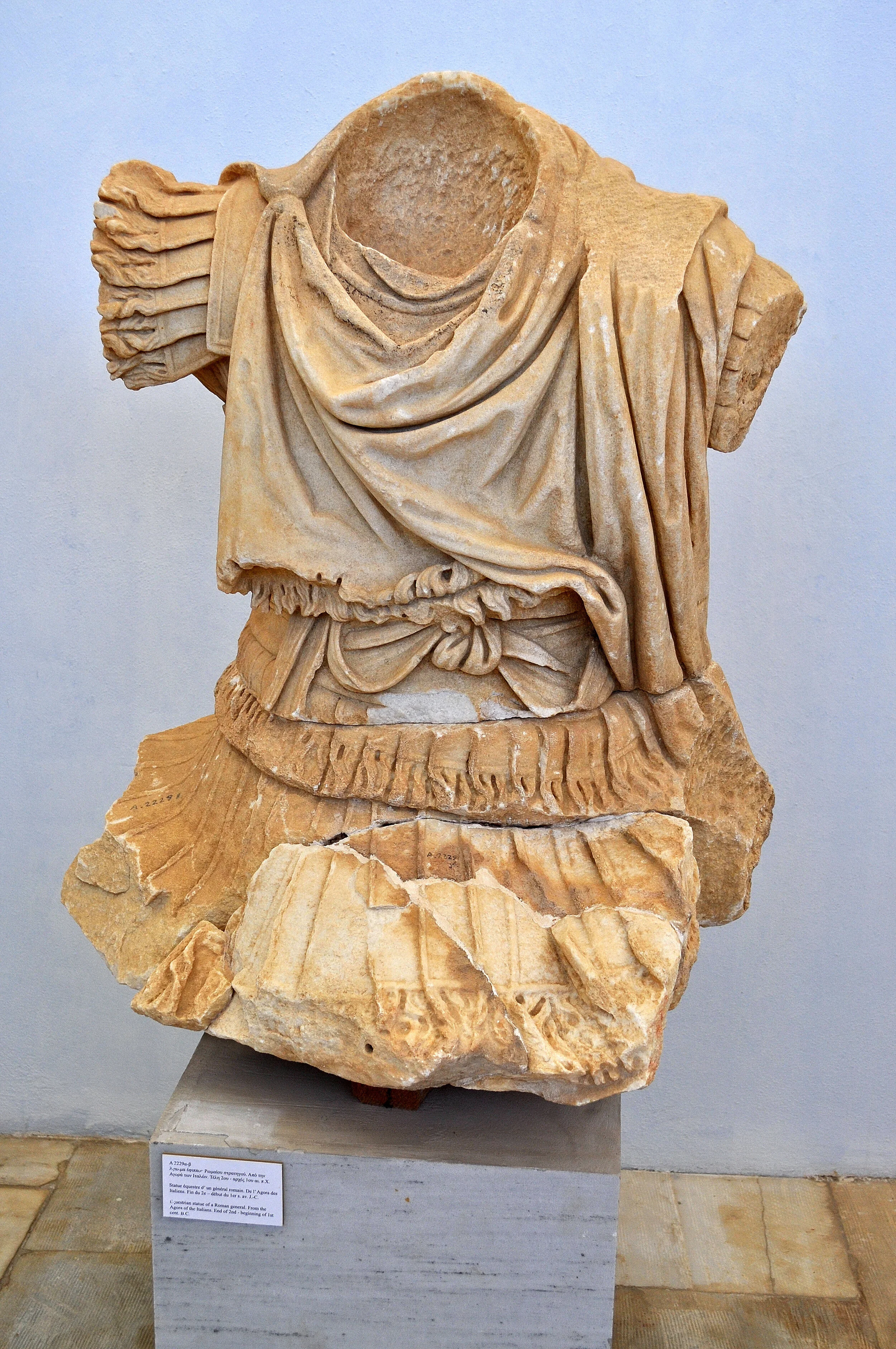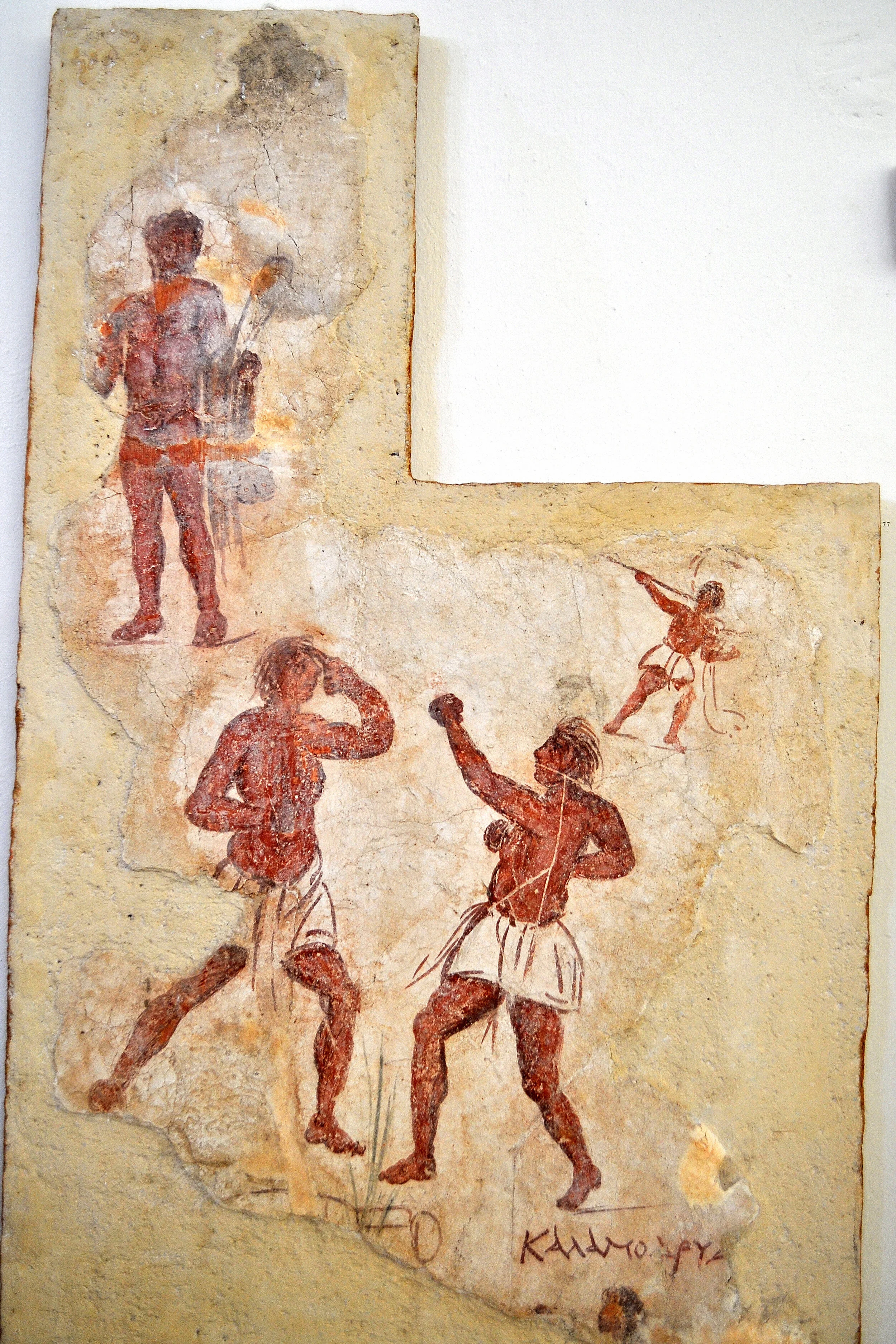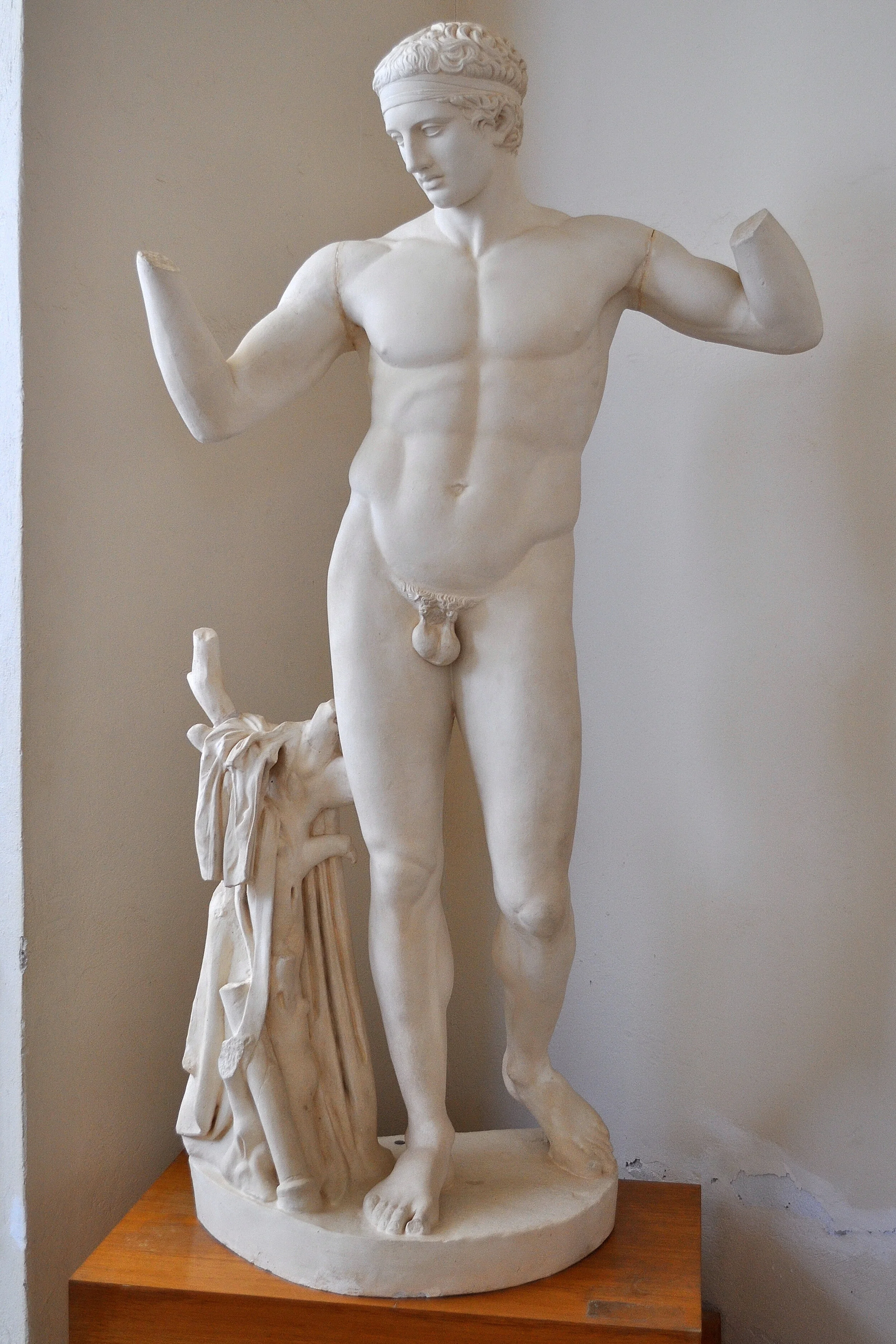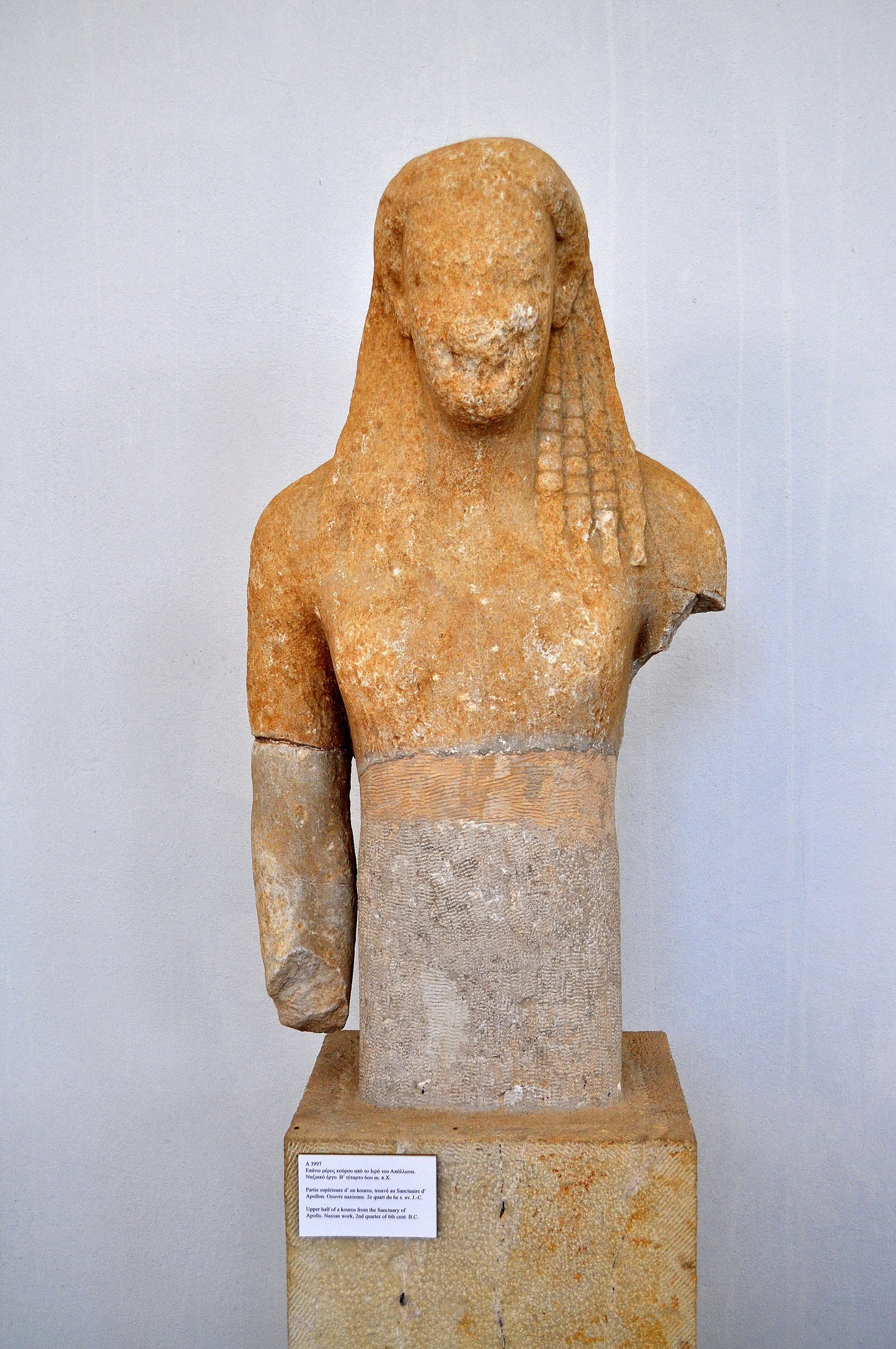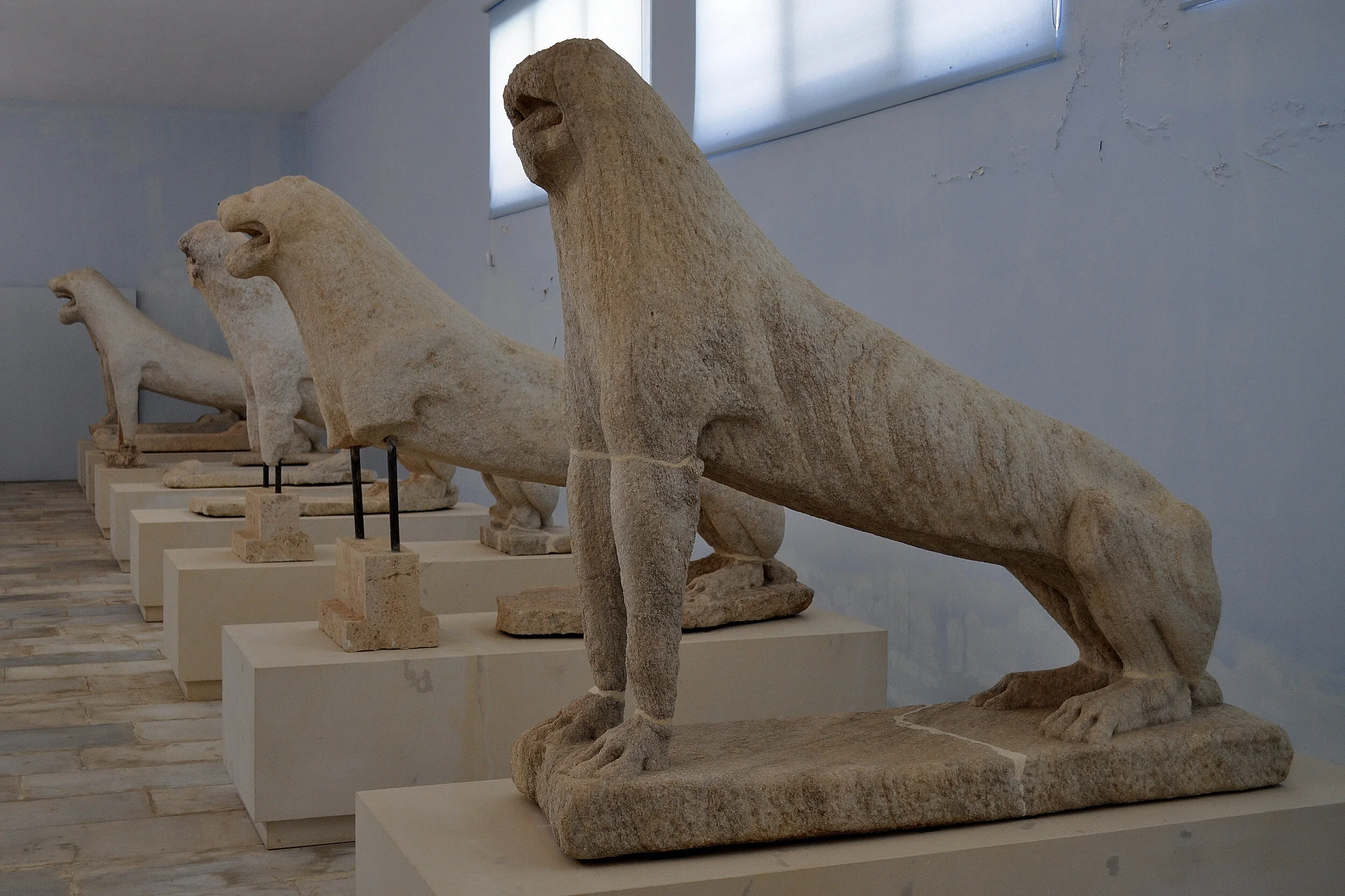Delos
Piero: spending a week in Mykonos without visiting Delos is like going to Rome and skipping the Colosseum!
Angela: if you fell in love with the Greek islands from the very first moment, this one has always had a special place in your heart.
Piero: exactly! I see it as one of those magical places that have fascinated me more than almost any other. Actually, fascinated doesn’t even come close: along with Olympia and Matera, it’s probably one of the few places that have truly captured me, places so beautiful they transport you into another dimension.
Angela: it really is one of those places where you feel part of the history of humanity, and you sense its essence deep within.
Piero: delos, although one of the smallest islands in the archipelago, with just over three square kilometers, has always been considered the heart of the Cyclades.
Angela: not so much geographically, even if the Cyclades seem to form a perfect circle around this island, but rather because it is regarded as the cradle of Greek civilization, up to the development of Athens.
Piero: the island is a vast open-air archaeological site, a UNESCO World Heritage site since 1990, where myth and Greek history intertwine: just think that according to legend, the god Apollo was born right here!
Angela: wait, don’t rush into your story just yet! first, some practical information. the island is completely uninhabited, so overnight stays are not possible; it is easily reached by a ferry taking just over half an hour from Mykonos. practically all hotels and villages offer visit packages to the island; in addition to the ferry cost, you also have to pay an entrance fee for the archaeological site; it’s definitely worth hiring an expert guide: there are guides available in all languages.
Piero: don’t forget to bring a hat and plenty of water: the island is mostly rocky and treeless, and you’ll need to walk a lot under the sun to fully enjoy all its wonders.
Angela: the feeling of entering another dimension hits you as soon as you arrive at the island’s pier. we left very early in the morning when Mykonos was already awake and lively, and we arrive at this island ruled by silence; you can only hear the waves, the wind rustling the bushes, and the cicadas chirping: you almost fear that any word could be out of place compared to the beauty glimpsed already from the pier.
The sacred island in myth
Piero: according to myth, the twins Apollo and Artemis were born on delos; leto (latona to the romans), lover of zeus, had taken refuge on the island to give birth to the two children of the king of the gods and to escape the wrath of hera. leto and her family of titans are also linked to the birth of the island: according to the myth, leto’s sister asteria was also pursued by zeus, a notorious womanizer; to escape the clutches of the king of the gods, asteria transformed into a quail, while zeus took the form of an eagle; desperate, asteria threw herself into the water, creating an island in the aegean that was originally only floating. only later did zeus fix the island firmly in the sea to celebrate the birth of his two children. leto could only find refuge with her sister, since hera had forbidden anyone to welcome zeus’s concubine.
Angela: these myths are also linked to the island’s name. the original name of delos was ortigia, from the greek “quail island”; after the birth of apollo and artemis, the name changed to the current one, which means “the luminous one” in greek, in honor of the god of the sun and the goddess of the moon, apollo and artemis respectively.
Piero: for the greeks, then, delos was the birthplace of light, the highest good, and for this reason the island was the most famous and sacred of all. the first settlements on the island date back to 3000 bc on the summit of mount cynthus (mount is a figure of speech: it barely reaches a hundred meters...); around 1000 bc the mycenaeans arrived, probably bringing the cult of apollo with them: the island became a true sanctuary of the sun god, maintaining its splendor until the 5th century bc; all greeks gathered here to celebrate the deities born here. at this time delos was so important it became the seat of the league named after it, formed by the greek city-states after the persian wars to defend against future threats. the great temple of apollo was built here, housing a colossal statue of the god, though none of it has ever been found. in the 5th century bc the island came under the dominion of athens, where large sums collected by the delian league were also transferred. delos began to decline, culminating when the athenians decided to purify it: all the island’s tombs were opened and the remains moved to a common grave on the nearby island of rhenea (also now uninhabited); but most importantly, it was decreed that no one could be born or die on the sacred island. the sick and women in childbirth were therefore moved to rhenea until in 422 bc all the inhabitants of delos were exiled. once independence was regained, splendid buildings were constructed and hundreds of statues commissioned, of which today only the pedestals with inscriptions remain. with the roman conquest, the island became a major commercial hub, thanks to its strategic location in the center of the aegean sea. delos changed its look and became a small, bustling maritime and commercial town, with the only peculiarity of maintaining the ancient sanctuary. friendship with rome was the cause of its final destruction at the hands of mithridates, king of pontus, who was at war with the romans in the 1st century ad. since then the island was abandoned and forgotten, becoming only a refuge for pirates.
Angela: excavations on the island began in 1872 and have brought to light the sanctuary and remains of the city. excavations are still ongoing and are probably far from complete: sculptures, statues, vases and various objects are now housed in the island’s museum.
The wonders of Delos
Piero: you arrive on the island docking at the new pier for tourist boats; however, delos once had a magnificent example of an artificial pier built in granite, which was the main part of the sacred harbor. from the port, our walk begins towards the streets and the ruins of the houses. in this area, many residences dating back to the 2nd century bc are preserved, a period when the island became a “free port” and welcomed an increasing number of merchants from all over the central-eastern mediterranean; these must have been sumptuous homes belonging to very wealthy people, as evidenced by the statues decorating them and the rooms adorned with mosaic floors and painted walls: the most important and luxurious are the house of cleopatra, the house of dionysus, and the house of the trident. all these houses are located near the theatre, but others can be found beyond the theatre, close to the terrace hosting the sanctuaries of foreign gods, and still others near the sacred lake.
Angela: all around, there are buildings dedicated to sports activities that were used both for training and for the Delian festivals. These were celebrations of very ancient origin, said in myth to have been established by theseus upon his return from crete, to celebrate the slaying of the minotaur. The competitions took place every four years and included both athletic and theatrical events, so besides the theatre, an hippodrome, a stadium, and three gymnasiums were built; the prizes for the winners were laurel crowns and palm branches—the plant leto was said to lean on during childbirth and a symbol of the celebrations. walking among these ruins, you get the feeling of stepping back more than two thousand years...
Piero: moving beyond the theatre, you reach the terrace of the foreign gods: further evidence of the exchanges and influences from other peoples on this island, this area hosted a sanctuary dedicated to Syrian deities and especially Egyptian ones.
Angela: we now turn back toward the sea and head to the sacred way that leads to the sanctuary of Apollo: an enclosed area hosting three temples dedicated to the god, surrounded by a multitude of worship buildings and ex-voto monuments. At this point, we are inside the sanctuary itself.
Piero: here there are three temples dedicated to the god Apollo. The oldest dates back to the second half of the 6th century b.C.; it once housed a statue of Apollo created by two artists from naxos. the second building is known as the “great temple” and likely dates to the time when delos became the seat of the league of the same name; its construction was halted in 454 b.C., when the league’s treasury was moved to athens, but even though work resumed after independence was restored, the temple was never completed. The third is the temple of the Athenians, or the temple of the seven statues: it was inaugurated by the Athenian commander Nicias in 417 b.C. and was meant to house seven images of deities inside.
Angela: within the sacred area, there are also small structures known as “treasuries”: these housed votive offerings to the deities. The most important among them is undoubtedly the so-called Oikos of the Nassoi.
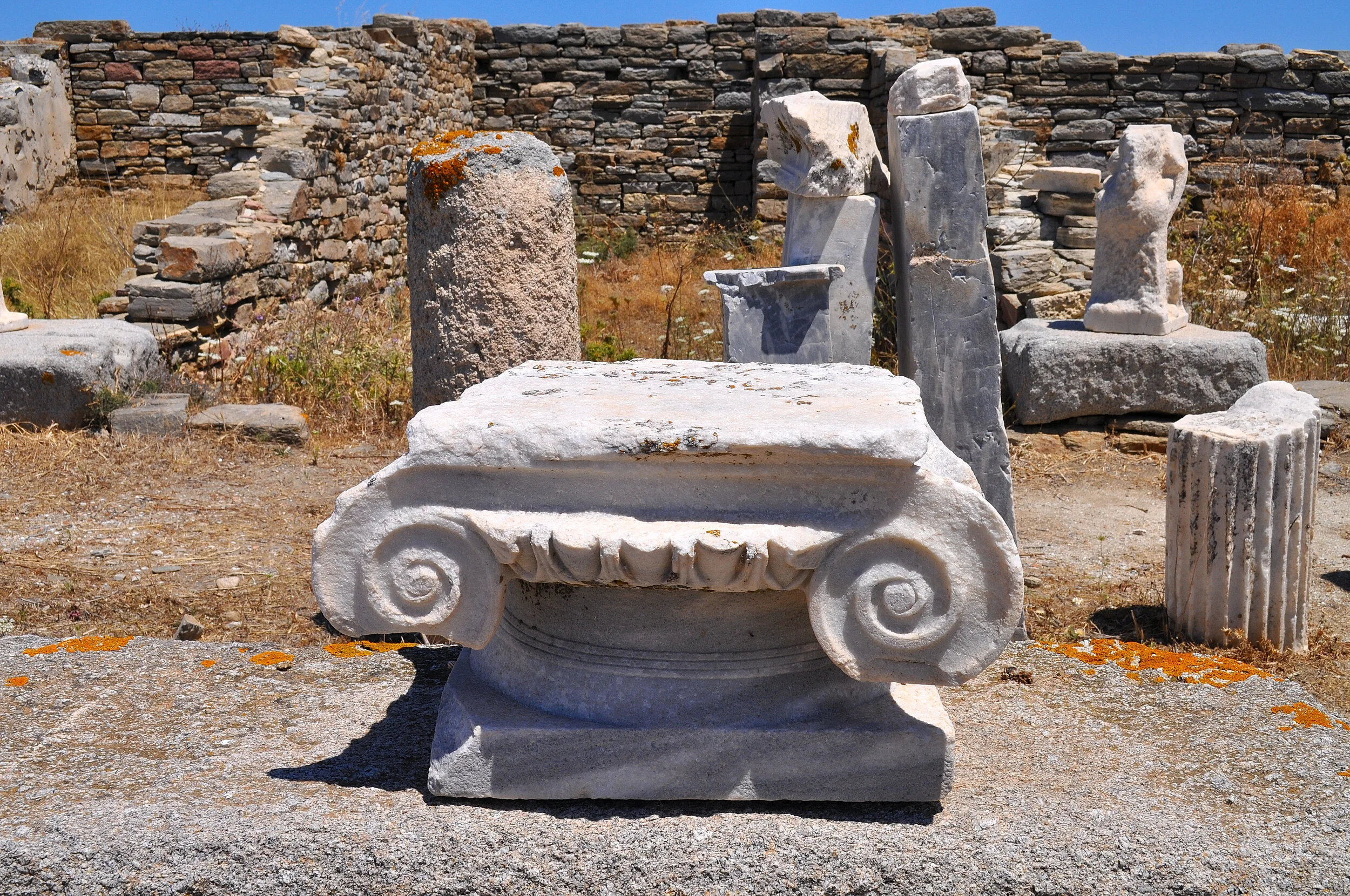
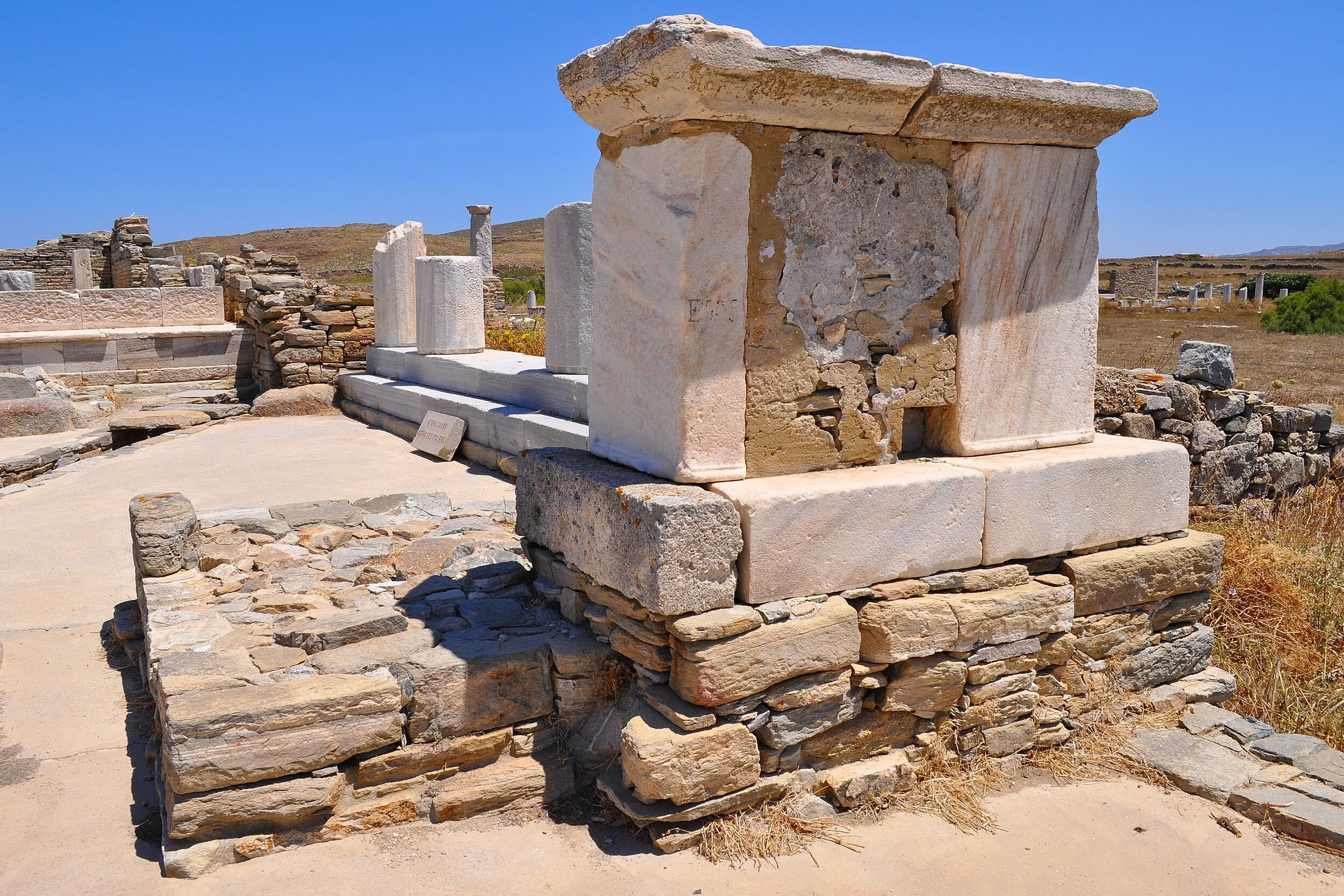
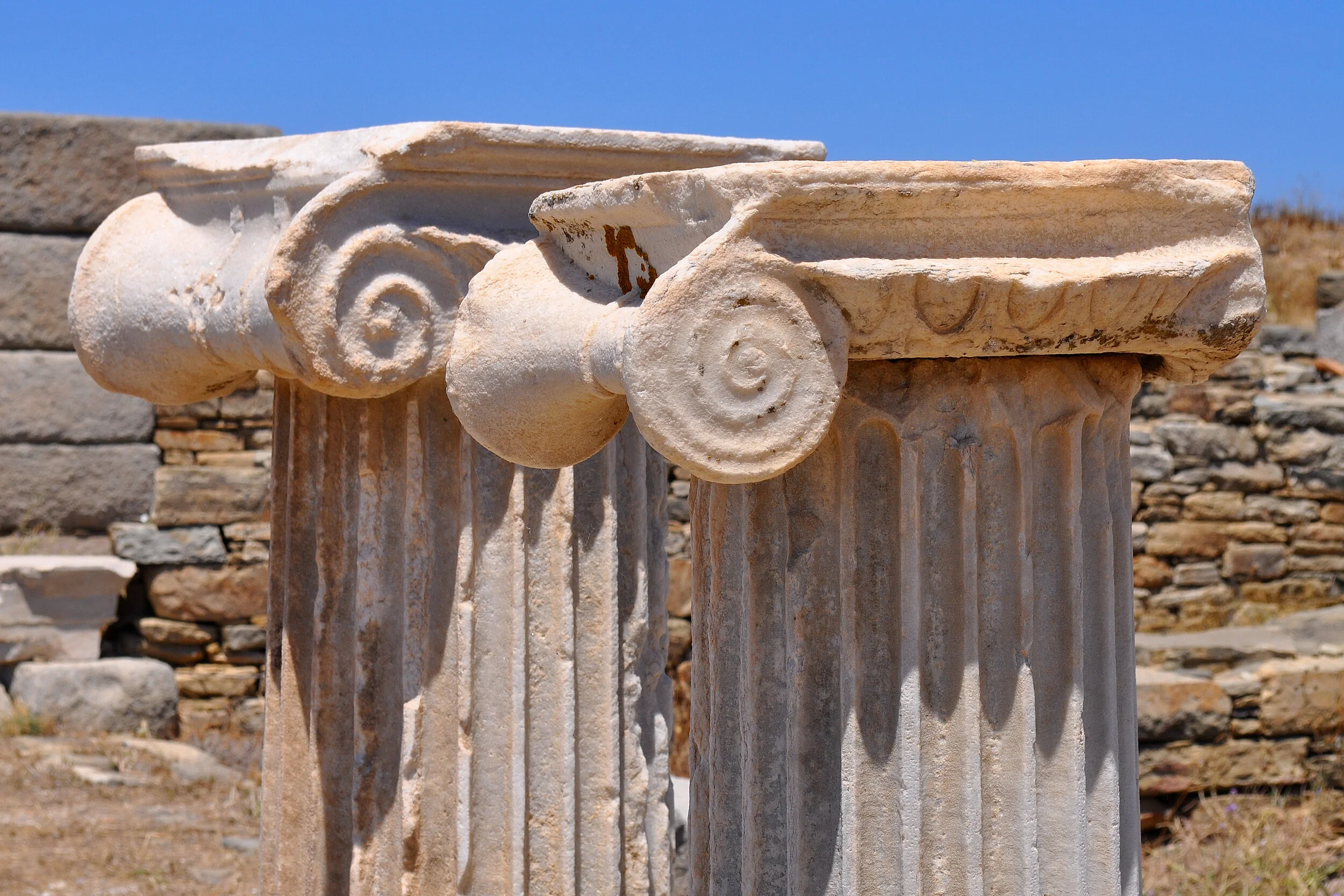
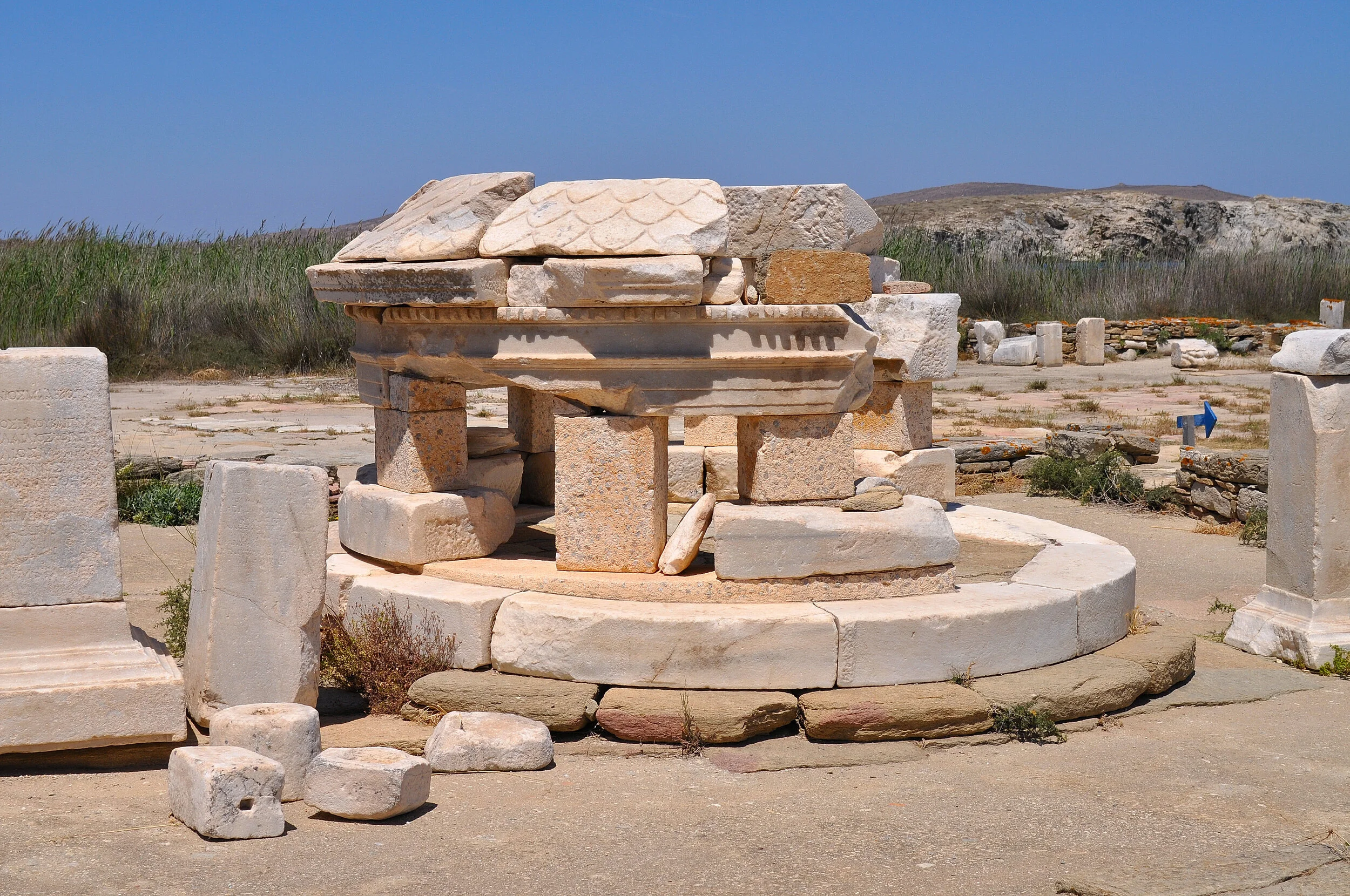
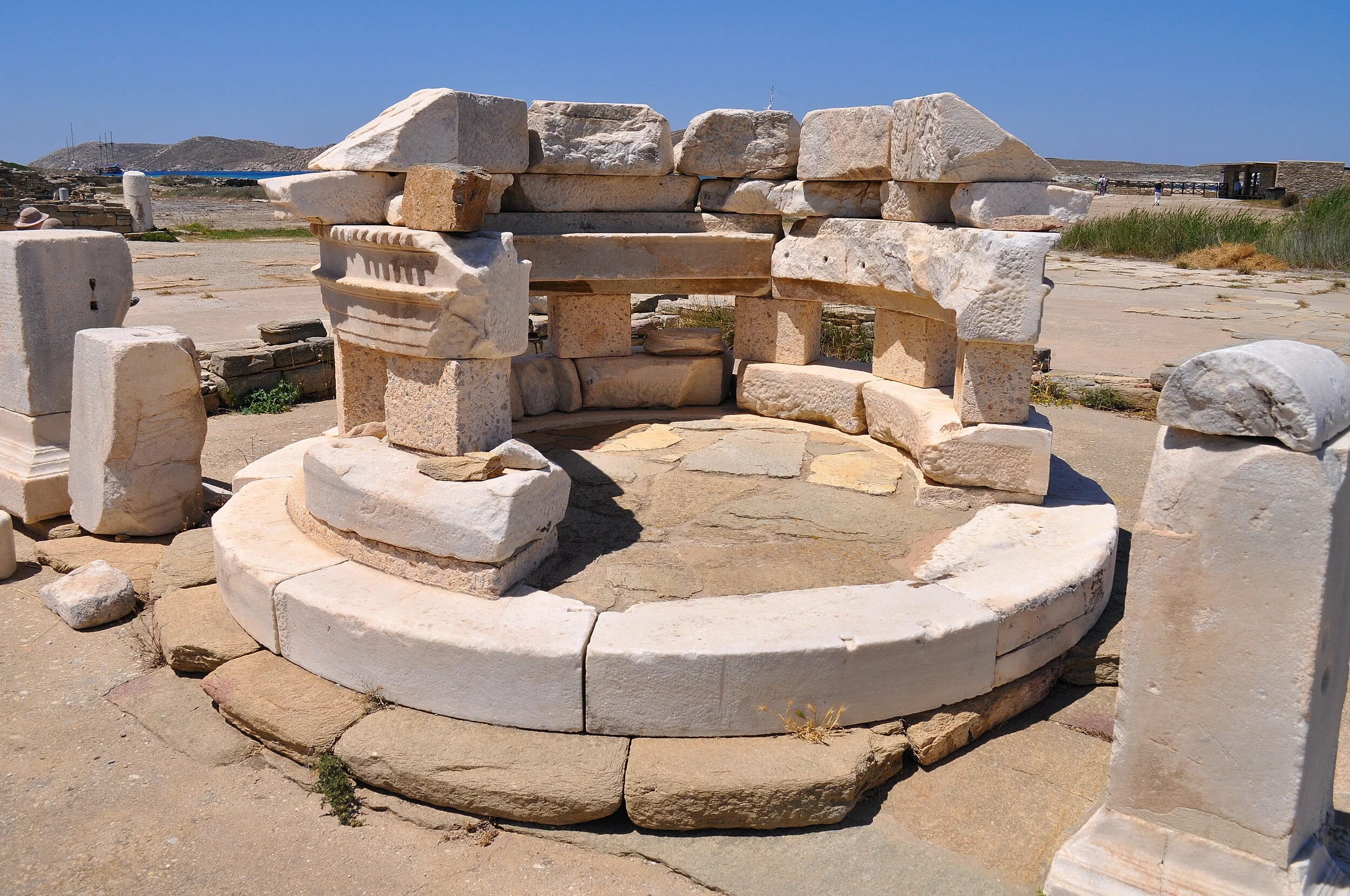
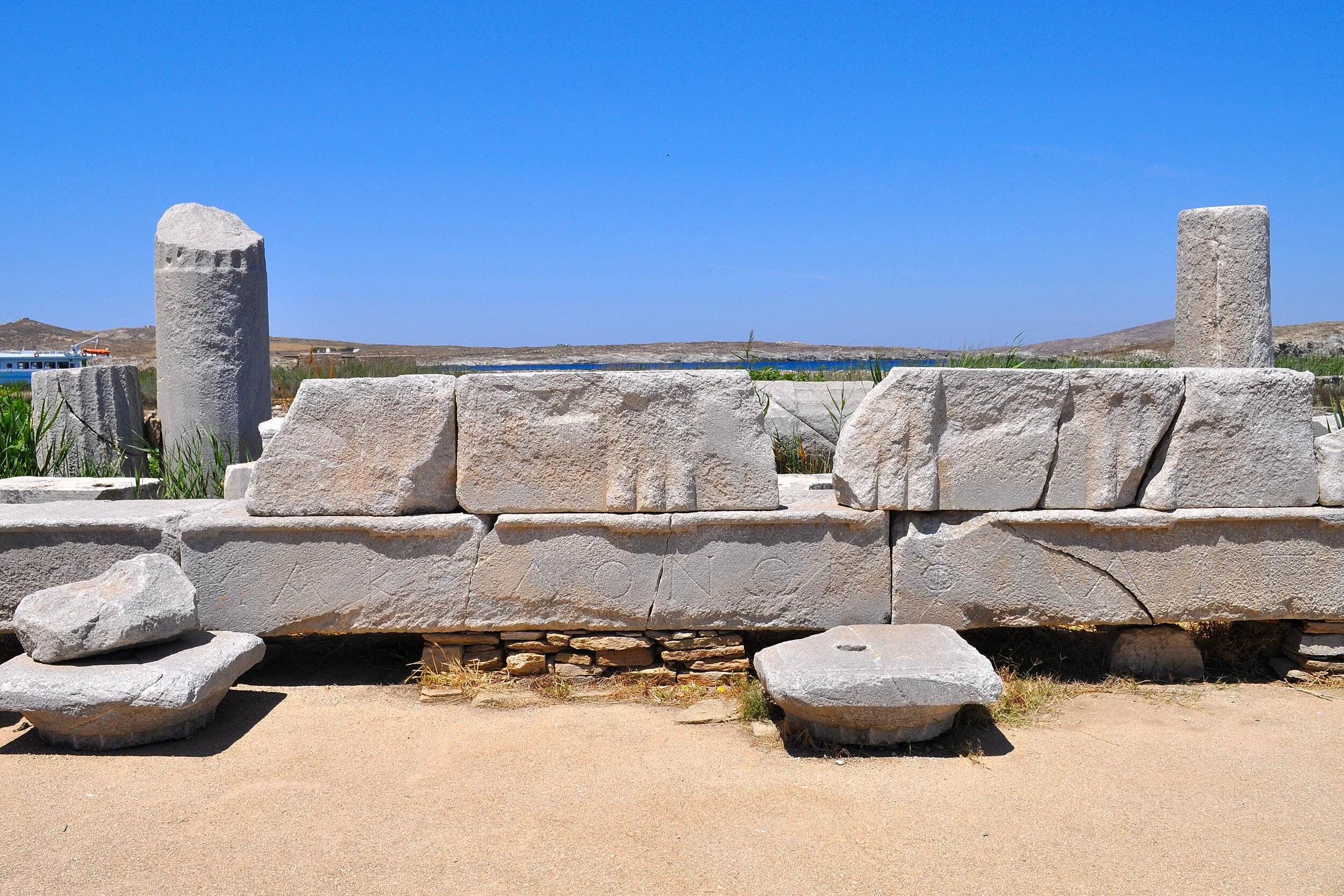
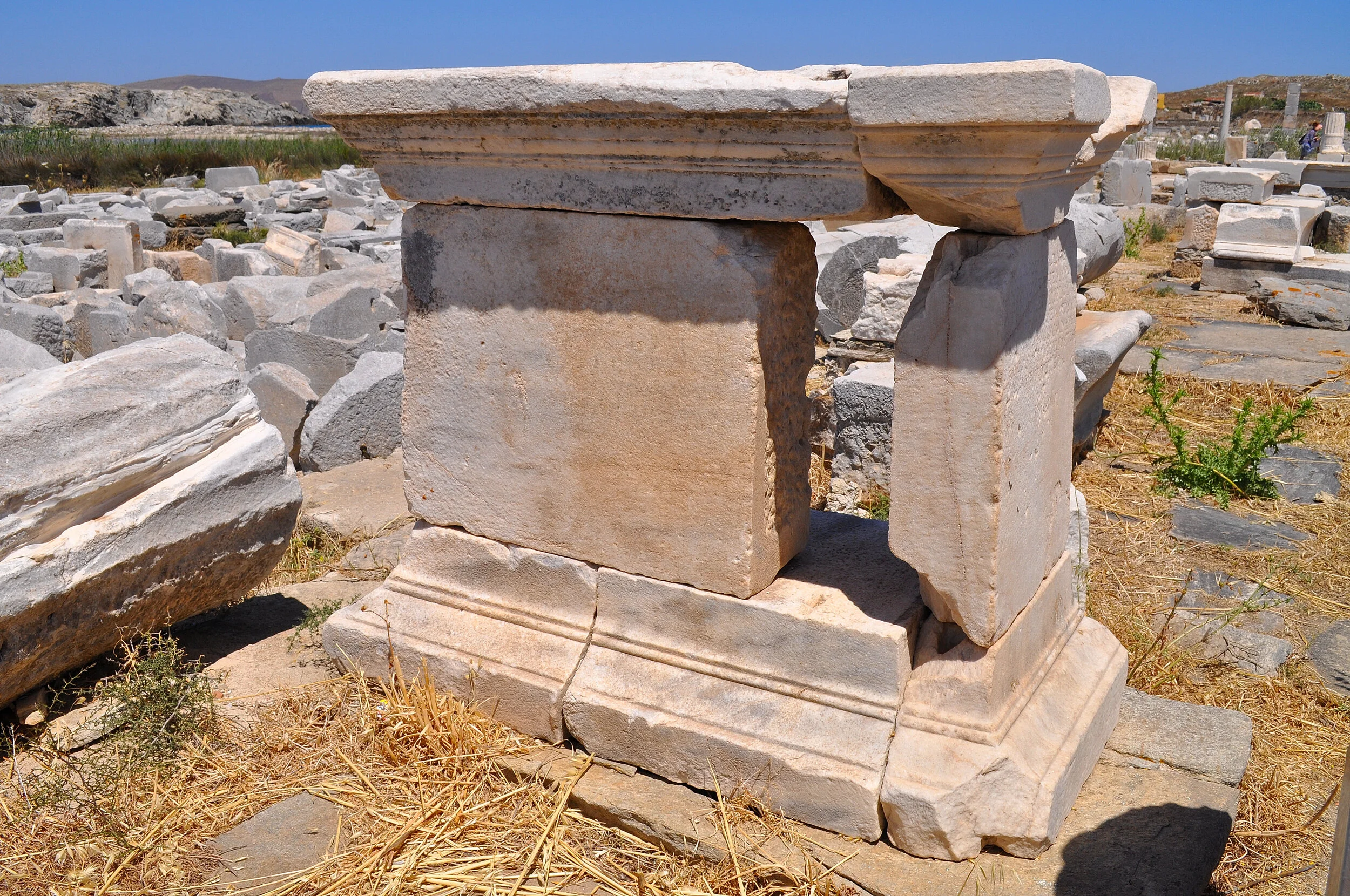
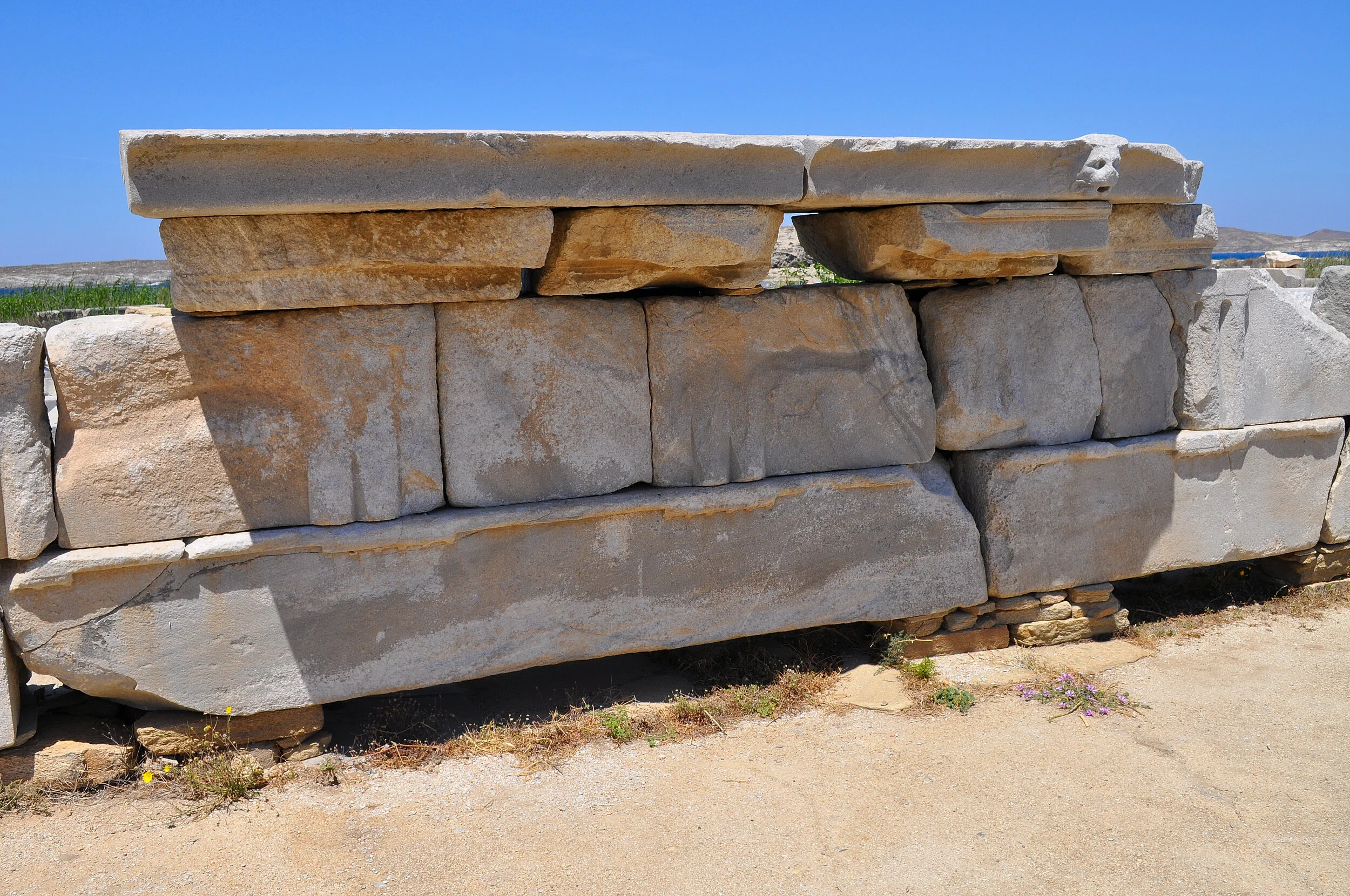
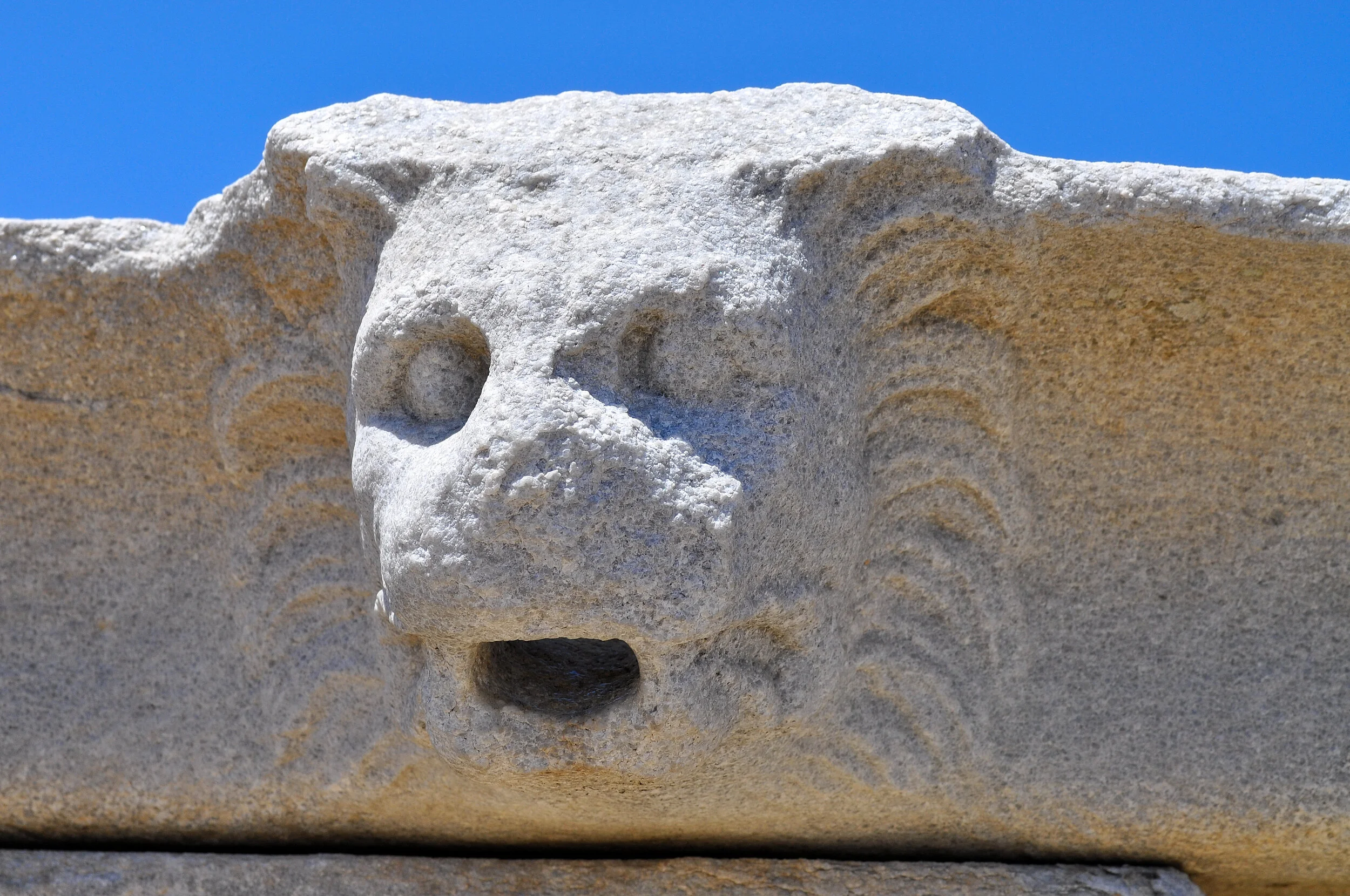

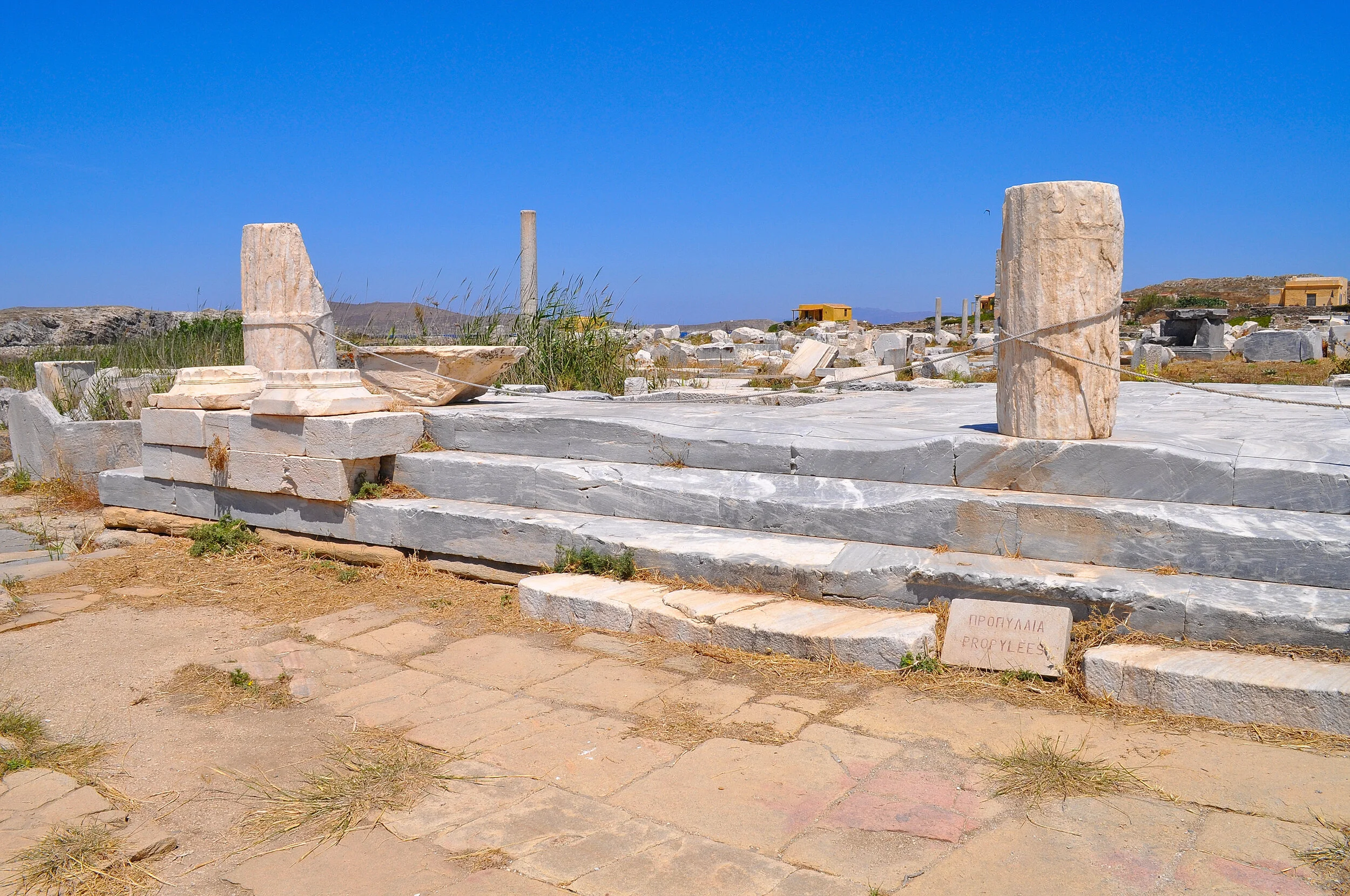
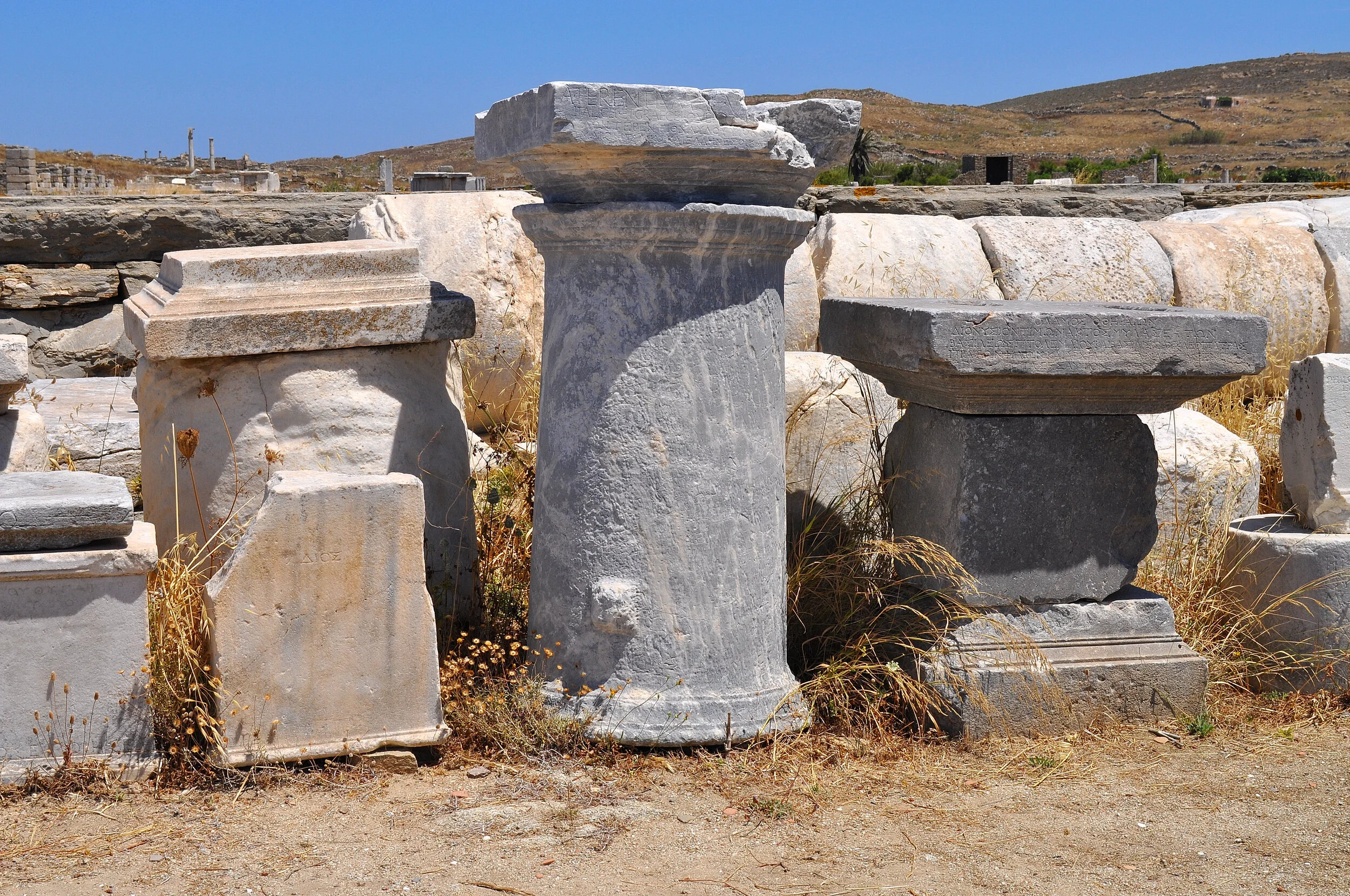

Piero: beyond the sanctuary, to the north, was the sacred lake that hosted Apollo’s swans: it was created at the exact spot where Leto supposedly gave birth to the twins; today there is no trace of the lake as it was drained in 1925 following a malaria outbreak among archaeologists.
Angela: right in front of the lake area is the famous Terrace of the Lions. it is a monumental avenue lined with archaic lion statues, facing the sacred lake, seemingly guarding the island and the sanctuary. they date back to the 7th century bc and were gifted to delos by the extraordinary artisans of naxos, who carved them from local marble. the original number is uncertain; probably nine, twelve, or maybe more: today only five statues remain, while a sixth was taken by the Venetians in the 17th century and still stands guard in front of the arsenal.
Piero: as evidence of the presence of merchants from all over the known world, some buildings dating back to the island’s period of greatest splendor were likely the headquarters of foreign guilds: among the most interesting is certainly the Agora of the Italics.
Angela: our visit to the island ends with the tour of the museum.
Piero: the museum houses many artifacts, objects, and statues found over time on the island, an important part of which is kept at the National Archaeological Museum in Athens. As discoveries were made, it was decided to build this museum directly on site starting in 1904, with later expansions added over the years. The original lion statues are preserved here: the ones currently visible on the terrace we mentioned are just copies.
Angela: the museum is further evidence of the magnificence of this island and the splendor of its history.
Delos: an unforgettable memory!
Piero: visiting this island is something unique and unforgettable. Every step was a discovery, imagining what life might have been like here two thousand five hundred years ago.
Angela: every corner is special and hides something worth seeing and learning about.
Piero: few places in the world transport you with such intensity: I would have loved to stay much longer to admire and photograph as much as possible.
Angela: it didn’t really look like you didn’t… we had to drag you onto the ferry that brought us back to Mykonos!

